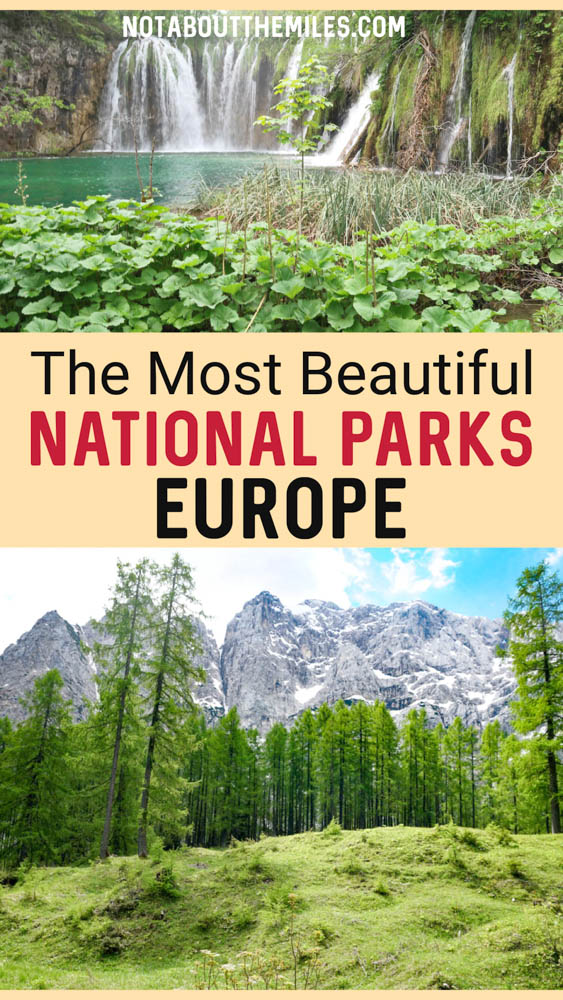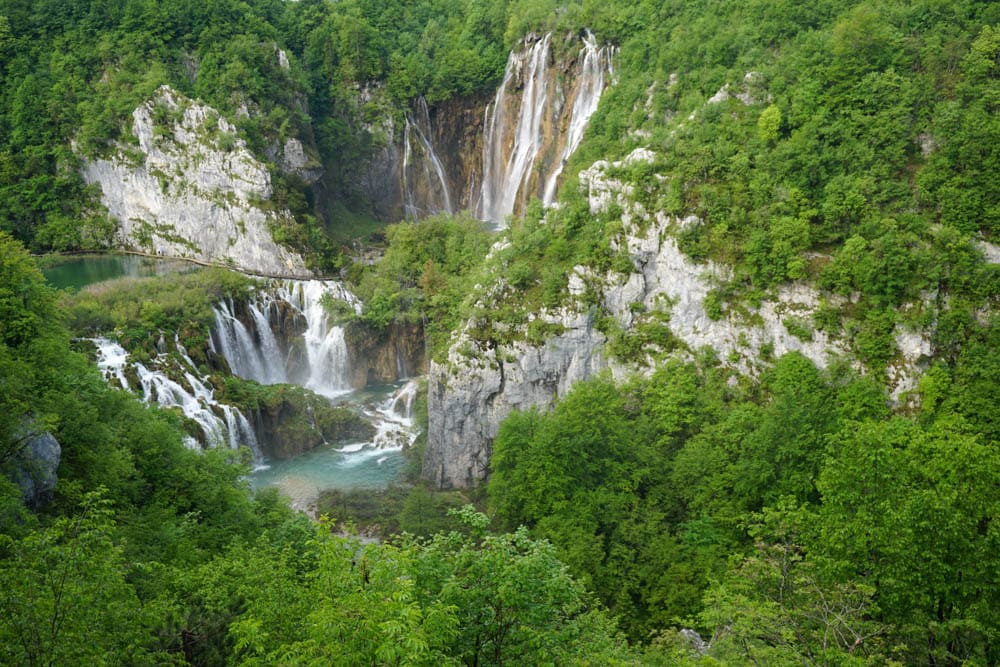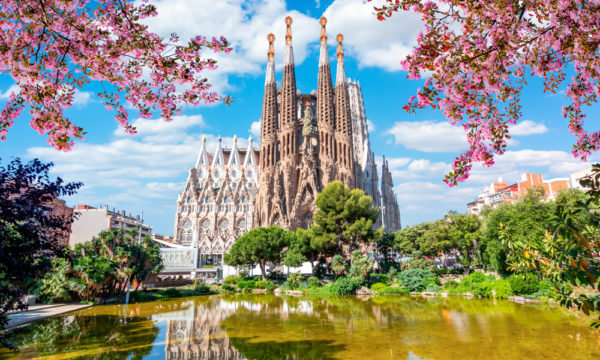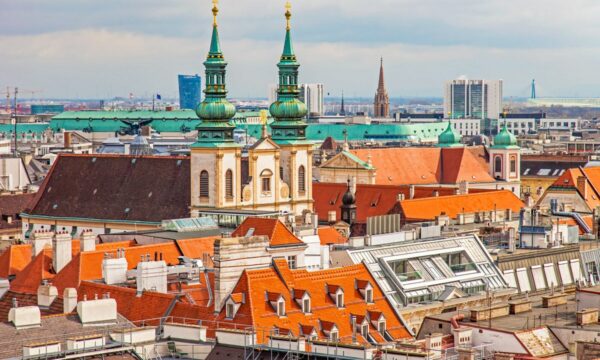The best national parks in Europe offer breathtaking scenery, many opportunities for outdoor recreation, and, in some cases, structures of historical or cultural significance.
No matter where in Europe you travel, you will find stunning national parks to add to your itinerary!
From jaw-dropping waterfalls at Plitvice Lakes National Park in Croatia to the picturesque villages of Cinque Terre National Park in Italy, the mountains and alpine lakes of Jotunheimen National Park in Norway or Triglav National Park in Slovenia, you will be spoiled for choice when it comes to nailing down the best European national parks to add to your next trip.
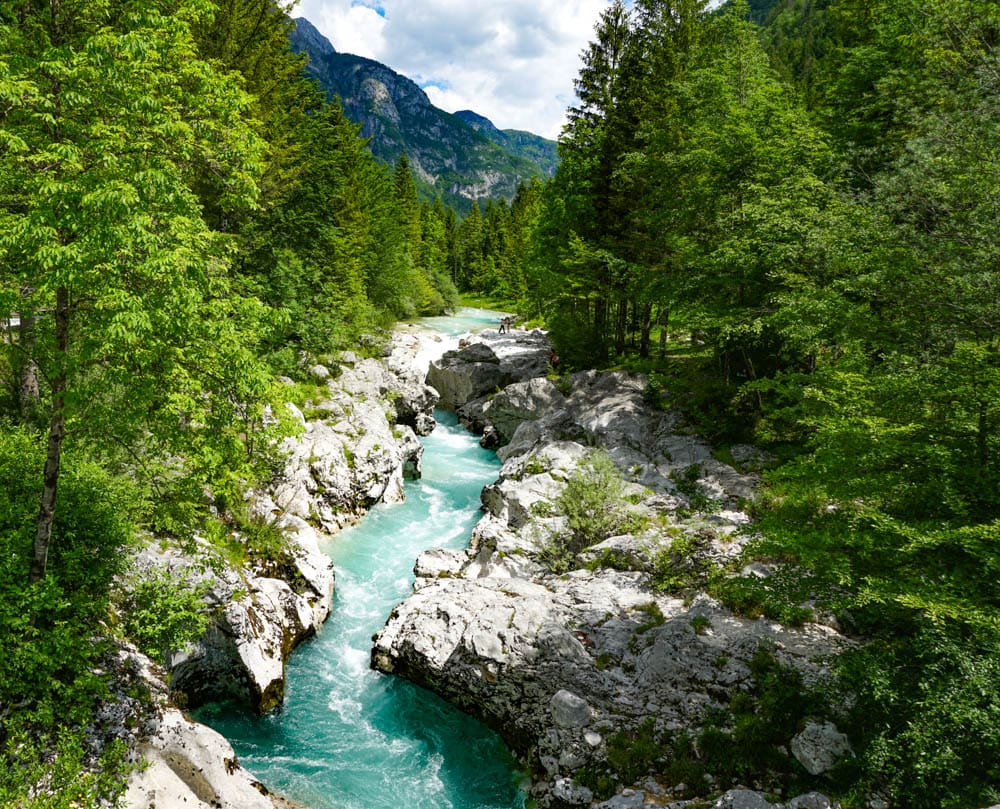
Some links on this page may be affiliate links. If you click an affiliate link and make a purchase, we may receive a small commission, at no extra cost to you. For more details, refer to our disclosure.
We’ve visited several national parks in the European countries we’ve visited so far, and we’ve included our suggestions for some top national parks in Europe, but we also asked other travel bloggers to suggest their favorite European national parks to include a wide variety of destinations.
While including some of these beautiful national parks in your itinerary makes perfect sense if you are planning to rent a car and do a road trip, many of the parks can be reached via public transport as well.
Excited? Let’s get started discovering the best national parks in Europe!
Plitvice Lakes National Park, Croatia: One of the Most Stunning National Parks in Europe
Plitvice Lakes National Park is one of the best national parks in Europe, well deserving of a place on every nature lover’s bucket list. The park is one of the best places to visit in Croatia.
One of Croatia’s eight national parks, Plitvice Lakes is a chain of sixteen beautiful lakes, connected by a multitude of waterfalls, large and small.
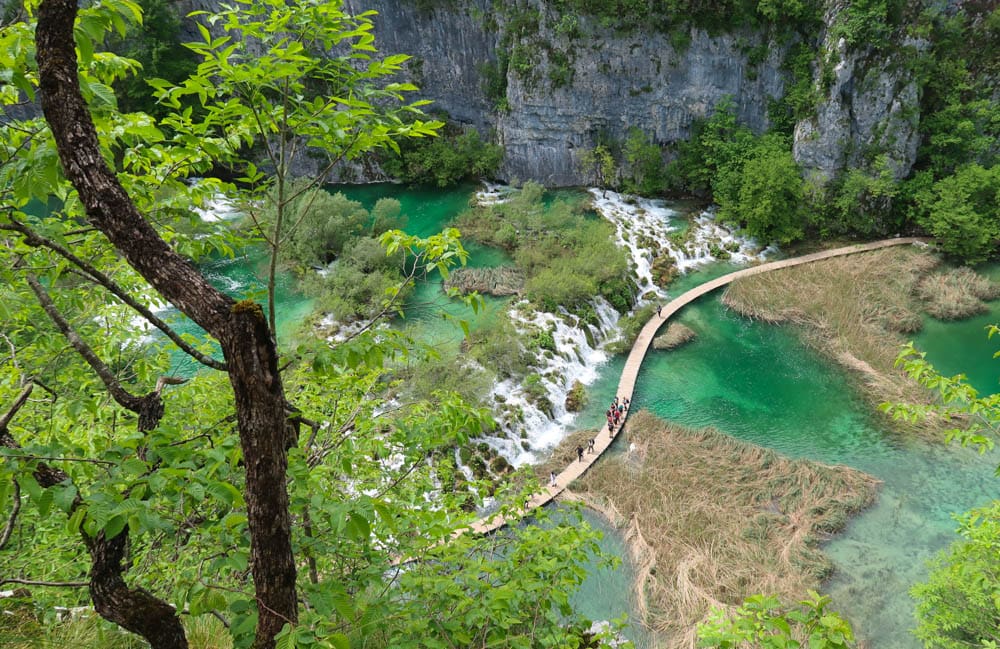
The lakes at Plitvice Lakes are divided into Upper Lakes and Lower Lakes. You can explore the park via boardwalk trails and trails along the banks of lakes, and your entrance fee includes a boat ride on Lake Kozjak, the lowest of the Upper Lakes.
The waterfalls at Plitvice Lakes are breathtaking.
Veliki Slap (which translates to Big Waterfall!) is the tallest waterfall in the park, and one of the most picturesque.
You can walk quite close to the waterfall, and in the spring, you can feel the awesome power of the water as it thunders down the cliff.
There are numerous other beautiful cascades in the park, and you will find yourself stopping for photos every few yards.
Plitvice Lakes National Park is home to a wide variety of wildlife and birds, so keep your eyes peeled as you walk!
You cannot swim in the lakes or waterfalls at Plitvice Lakes National Park.
Wear comfortable shoes with good grip: the longest routes through the park, if you choose to do them, can take four to five hours.
Of course, you can choose shorter, easier routes as well.
Visit Plitvice Lakes in the spring or fall for fewer crowds than in the summer. In the spring, waterfalls are flowing at their powerful best, and the park is a vibrant green. Fall brings beautiful leaf colors. In the winter, many waterfalls freeze, and it may also snow, creating a winter wonderland landscape.
We recommend spending a night near Plitvice Lakes National Park to get ample time to enjoy its beauty, but the park is also one of the best day trips from Zagreb you can do. It is also one of the more popular day trips from Zadar or Split.
Suggested by us
Jotunheimen National Park, Norway
Jotunheimen National Park in Norway is without a doubt one of the best national parks in Europe.
The park covers about 444 square miles, and contains within it more than 250 tall peaks, leading to its name “Home of the Giants.” Among the peaks in the park, you will find Northern Europe’s two tallest peaks, Galdhøpiggen and Glittertind.
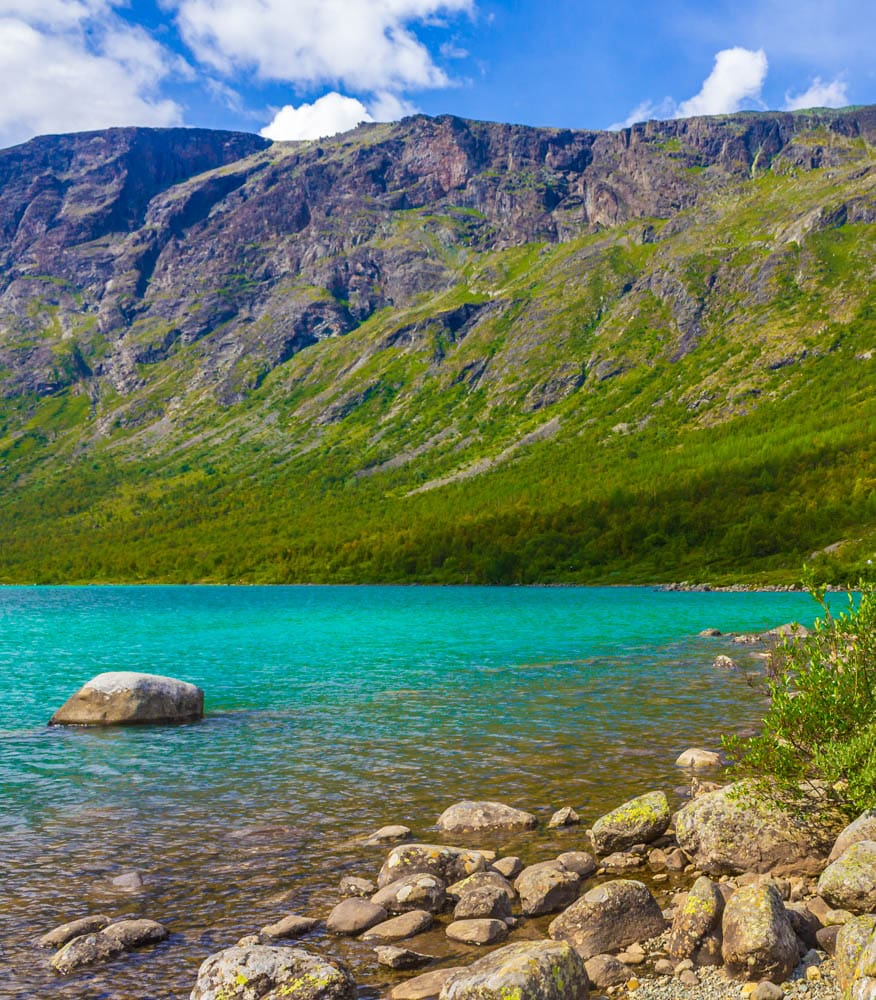
The park is a majestic playground and an opportunity to see Norway’s legendary natural beauty up close.
Hiking and biking trails abound in the park. Hiking trails in the park range vary in length, and you will find both day hikes and multi-day hikes. So also with biking routes.
The most stunning hike in the park is Besseggen Ridge, which runs between a green lake and a blue lake. You can try some of the summit hikes in the park, or even a glacier hike.
The ideal time to hike in Jotunheimen is mid July through mid August, although you may find good hiking weather on the cusps of this period as well.
There are many beautiful lakes in the park. A cruise on the Gjende lake makes a good combination with the Besseggen Ridge hike: take the boat one way and hike the other.
You can do a boat ride on Bygdin Lake as well: along the route, you will see several of the tallest peaks in the park, and you may spot reindeer as well, sometimes in large herds.
Other than hiking, Jotunheimen National Park offers many biking routes, horseback riding, river rafting, caving, and a via ferrata. In the winter, enjoy dog sledding, ski touring, snowshoeing, and snowmobiling.
The best time to visit Jotunheimen National Park is based on your preference for winter activities, or summer. The park is stunning year round!
Suggested by us
Vatnajökull National Park, Iceland: One of the Most Unique European National Parks
People who love the wilderness are bound to have Iceland on their list. Iceland packs a punch when it comes to things like glaciers, natural formations, and wildlife!
While there are a few national parks in Iceland, what makes Vatnajokull National Park unique and worth including in your Iceland itinerary is that it has the second biggest ice cap in Europe and numerous outlet glaciers.
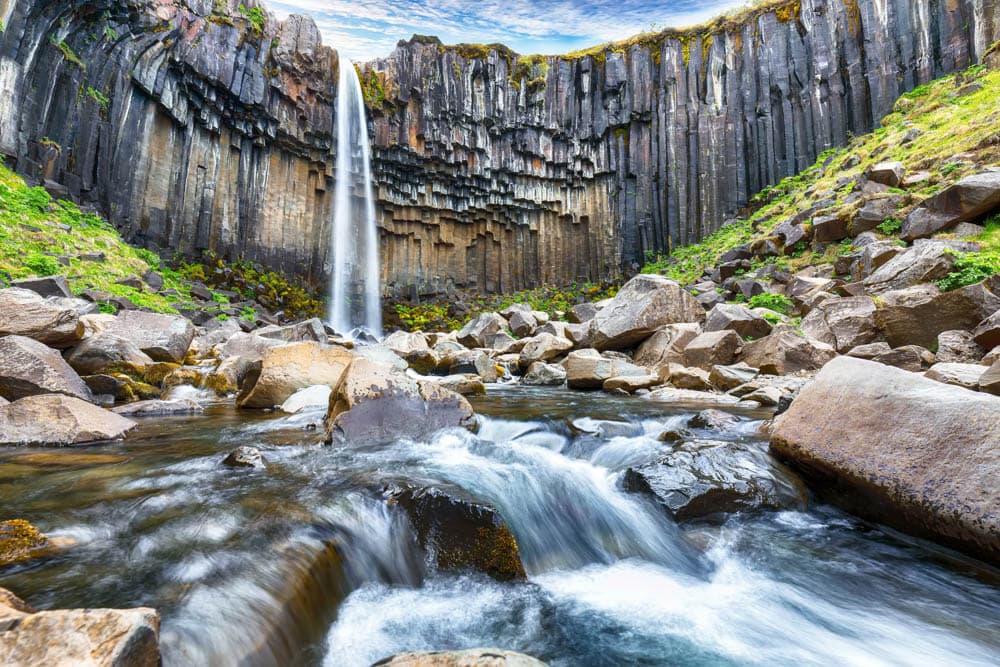
The name Vatnajokull literally means glacier of lakes, and the fascinating thing about this glacier is that it is located over volcanoes! Over the years, eruptions have caused pockets of water to be created underneath the glacier.
There are many things you can do in this park. Skaftafell, an independent national park, was combined into Vatnajokull, and has numerous hiking trails. One of the highlights here is Svartifoss waterfall, which has water falling over cliffs of black basalt columns.
Jokulsarlon Glacier Lagoon is situated quite close to Skaftafell and is famous as there are numerous ‘glacier bits’ you can find floating here. In summer, you can even take a boat ride into the lagoon. Diamond beach is also a quick walk away and is called so because these floating glacier bits can also be found here.
Other things you can do here include taking a ride on a snowmobile, hiking on a glacier, and hunting for ice caves!
Any time of year other than the winter months is a good time to visit Vatnajokull National Park. In the winter, the weather can get quite unpredictable and harsh, so it’s best to avoid visiting then.
Suggested by Lavina of Continent Hop
Lake District National Park, England
The Lake District is known as one of the greatest national parks in the UK. Located in the north of England, in the county of Cumbria, the Lake District’s landscape is full of rugged fell mountains, glacial ribbon lakes and traditional English villages.
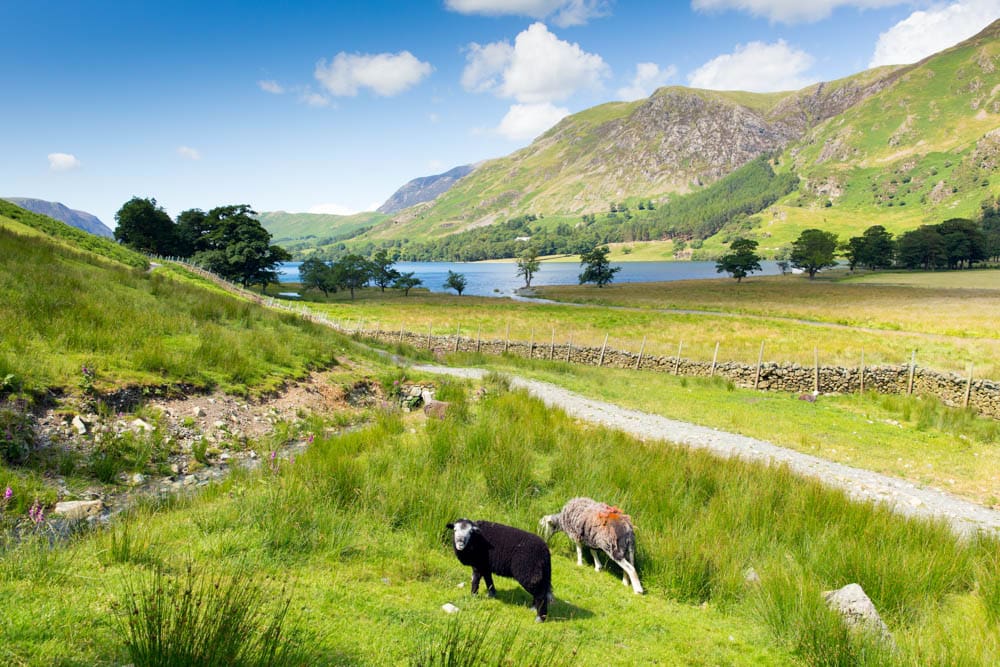
If you’re heading to the Lake District for the first time, don’t miss out on the chance to hike to the UK’s highest peak, Scafell Pike. Tie in your strenuous 3,200-foot climb with a visit to a traditional English pub at the foot of the mountain, rewarding yourself for all of your hard work.
If you’re brave enough, grab your swimsuit and head to the icy waters of the lakes for a unique wild swimming experience. Visit Coniston Waters or Derwent Water for some of the best views of the surrounding landscapes as you swim, kayak, sail or paddleboard.
For those who’d rather stay dry, the Lake District has a number of quaint English villages to enjoy. From the busy, scenic town of Ambleside, to the quiet home of famous English poet, William Wordsworth, in Grasmere, you could spend a few days village-hopping and admiring the grey slate buildings and cobbled streets.
The best time to visit the Lake District is in the summer season, approximately June to August. If you’re lucky, you’ll avoid the rain and catch some English sunshine, allowing you to soak up the views in the best possible way. It’s good to plan at least five days for your Lake District visit, especially if you want to do some hiking and check out some of the local villages.
If you’re wondering where to stay in the Lake District, read more about the different areas.
Suggested by Jennie of Jennie Wanders
Cinque Terre National Park, Italy
The Cinque Terre National Park is situated on the coastline of Liguria, also known as the Italian Riviera.
The Cinque Terre includes five historic fishing villages on the cliff edge: Riomaggiore, Manarola, Corniglia, Vernazza, and Monterosso. It is one of the most picturesque European national parks you can visit.
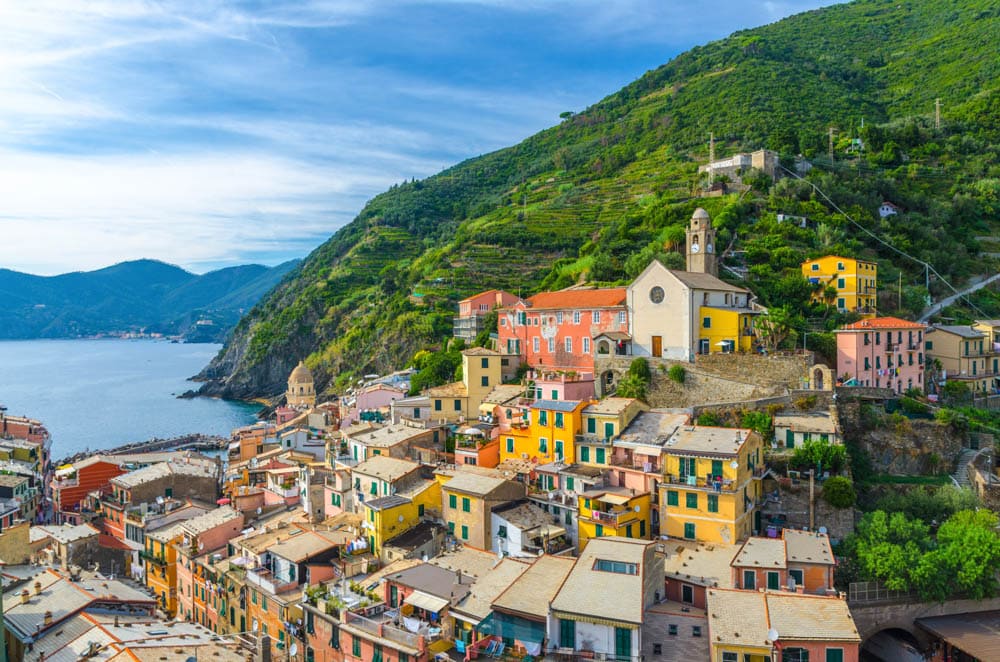
The five villages are connected by paths along the cliff tops and walking between them is one of the most popular things to do in Italy. The national park is Italy’s smallest, stretching from La Spezia to Levanto, but the outlook and views are spectacular.
Exploring the fishing villages is a must when you visit the area. Each of the Cinque Terre is unique, with colorful buildings, cobblestone streets, and panoramic sea views. If you don’t want to walk between them all, they are well connected by train.
However, doing at least one of the hikes or walks is a must while you’re in the national park. The cliffs are covered with wildflowers in the spring and wine is grown on terraces, following traditional viticulture practices.
Be sure to try some of the local wine while you’re in town, preferably somewhere with a view. Stop for lunch or dinner in one of the villages: Monterosso is the largest village, with a wide variety of restaurants. Try some of the local seafood and pesto alla Genovese, a specialty of the region.
The Cinque Terre National Park is best visited in the warmer months as landslides can occur when it rains. June is especially lovely with flowers sprinkled over the cliffs, green terraced vines, and fewer crowds than at the height of summer.
Suggested by Roxanne of Faraway Worlds
Saxon Switzerland National Park, Germany
Covering two areas in the German portion of the Elbe Sandstone Mountains, Saxon Switzerland National Park is one of the most beautiful national parks in Europe. It is located in the German Free State of Saxony, southeast of Dresden.
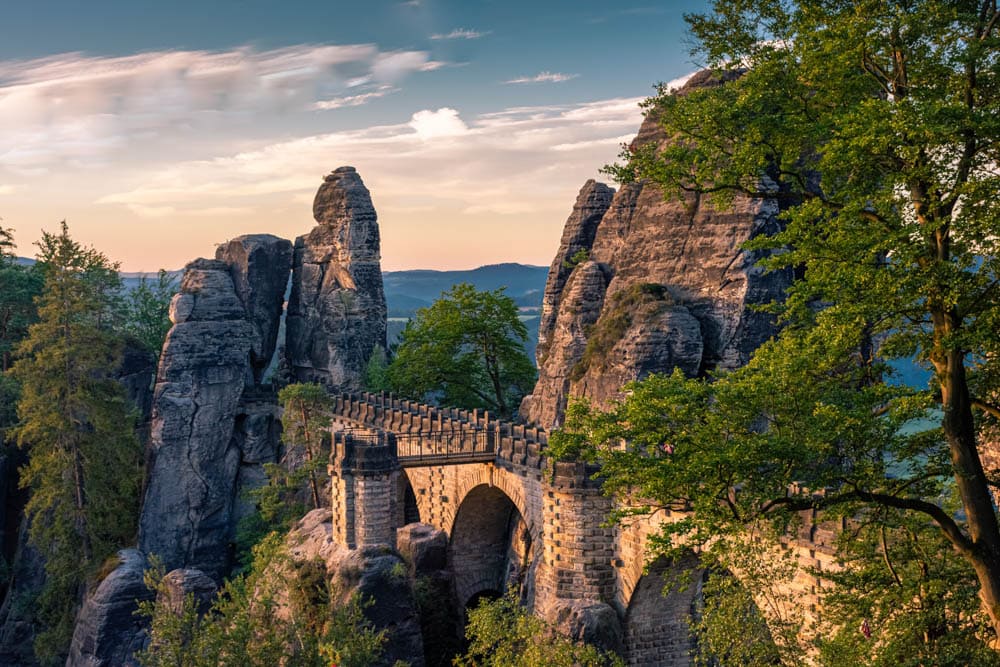
The park features gorgeous sandstone cliffs and eroded rock formations. The landscape includes mountains, valleys, and gorges, making it one of the most scenic in Europe. You will also find diverse flora and fauna in the park. Plants include a variety of ferns and mosses.
Saxon Switzerland National Park is a hikers’ mecca, with numerous marked hiking trails that vary in length and difficulty. There are steep treks for visitors that are up for a challenge. Bikers will find many routes in the park, and there are more than 700 peaks to challenge rock climbers. Relax in the many pools and saunas.
The most famous attraction in Saxon Switzerland National Park is the dramatic Bastei Bridge, built across the Bastei rock formation. Walking the famous bridge to enjoy the views on either side is one of the best things to do here. Entry to the bridge, and the park, are free.
Hiking in Saxon Switzerland National Park is best from late spring to early fall. Spring and fall offer great weather and lower crowds in the park.
Suggested by us
Triglav National Park, Slovenia
Triglav National Park is located in the northwestern part of Slovenia, near the borders of Italy and Austria. The park offers countless activities for adrenaline junkies as well as for those who seek relaxation and peace.
From river rafting to hiking Slovenia’s highest peak or discovering picturesque waterfalls and antique villages, there’s something for everyone.
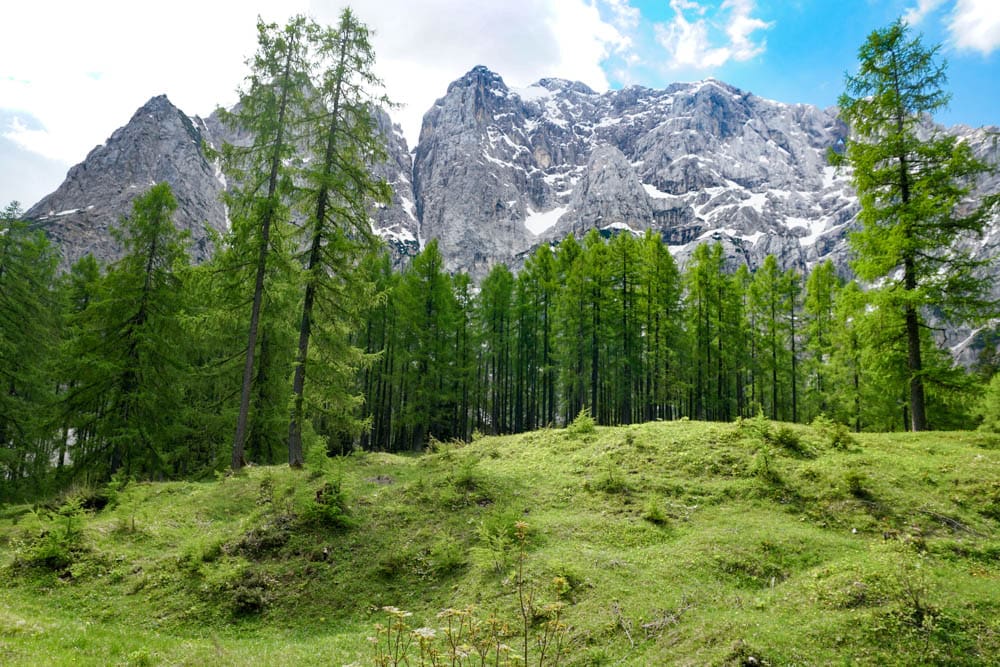
A must see is definitely the Soca River, which is considered one of the most beautiful rivers in Europe due to its crystal clear emerald waters. Rent a kayak or a stand-up paddle board and float along the river whilst admiring the beautiful nature en route.
The Savica waterfall and Lake Bohinj are not to be missed either and they can easily be visited on the same day as they are not far from each other.
Lake Bohinj is a beautiful alpine lake, and things to do at Lake Bohinj include hiking, kayaking, stand-up paddleboarding, and swimming. The trail around the lake is beautiful!
One of the most picturesque spots in Triglav National Park is Seven Lakes Valley. A beautiful hike leads to the glacial valley, which, as the name says, is home to several pristine lakes. You can do the hike as a day hike or a part of a multi-day backpacking trip.
If your time allows, you should spend at least 2-3 days in the national park. Exploring this gem of a national park is one of the best things to do in Slovenia! Make your experience even more memorable by staying in one of the mountain huts surrounded by nature.
The best time to visit Triglav National Park is between May and October, with July and August being the sunniest months when the lakes invite you to swim.
Suggested by Maria of A World of Destinations
Read more: Drive Vrsic Pass in Slovenia!
Sierra Nevada National Park, Spain
Sierra Nevada National Park is located in Andalusia and is home to the highest peak in continental Spain. The mountain range is also home to the most southern ski slopes in Europe.
The national park is protected and has been declared a biosphere reserve because of its unique flora and fauna.
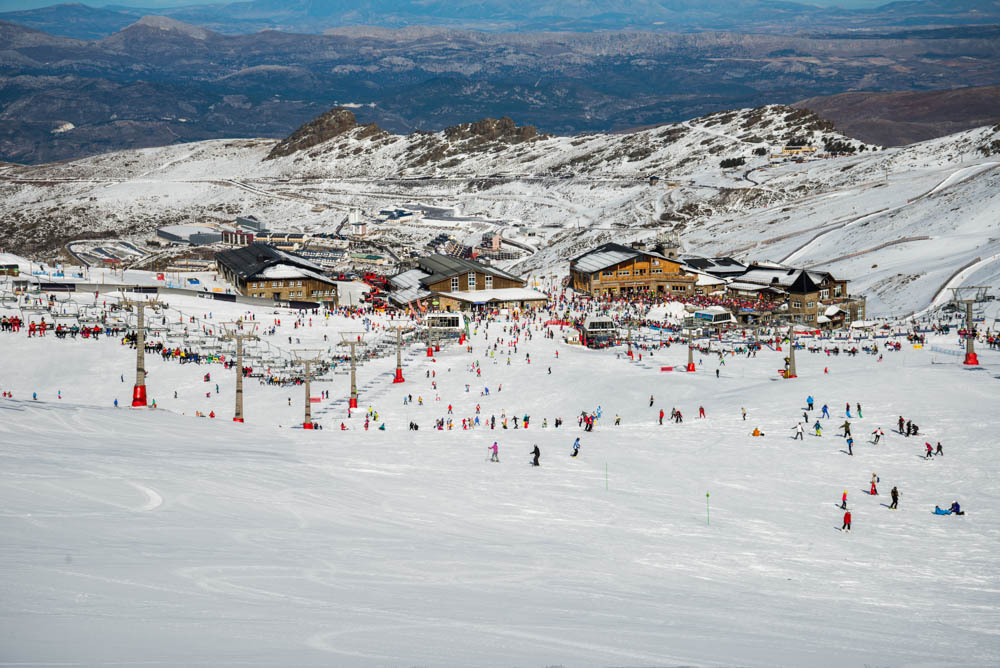
There are plenty of things to do in the Sierra Nevada National Park, no matter which season it is.
For nature lovers, there are numerous hiking trails that are best attempted during the spring and autumn, when the temperatures are pleasant. In summer it is too hot to hike, whilst in winter the snow at the higher grounds can make it dangerous.
Some of the easiest hikes, such as Ruta de los Cahorros, are easily accessible from Granada, and make perfect day outs because of the rivers and water bodies along the way.
The locals love to cool off by swimming in these rivers, in summer, when the temperatures in Granada go over 95 degrees Fahrenheit.
Climbing Mulhacen is another great way to spend some time in the national park, especially because you can wild camp close to the top.
Another great thing to do in Sierra Nevada is go skiing in winter. The Sierra Nevada ski resort has plenty of slopes, ranging from beginner to advanced. One interesting thing is that you can start your morning skiing, and enjoy the afternoon on the beach of Costa Tropical, which is a mere 40 minutes’ drive away.
Because Sierra Nevada is so close to the sea, it has a micro climate where the temperatures does not go below 60 degrees Fahrenheit, even in winter.
Suggested by Joanna of Andalucia in My Pocket
Oulanka National Park, Finland
Oulanka National Park is located in the northeast of Finland, close to Ruka, and runs along the Russian border. It is a unique place to visit in both winter and summer. In the summer months, look for wildlife, including bear, and rare wildflowers.
In the winter you will find a frozen wonderland for adventure. Oulanka National Park offers a range of things to do year-round.
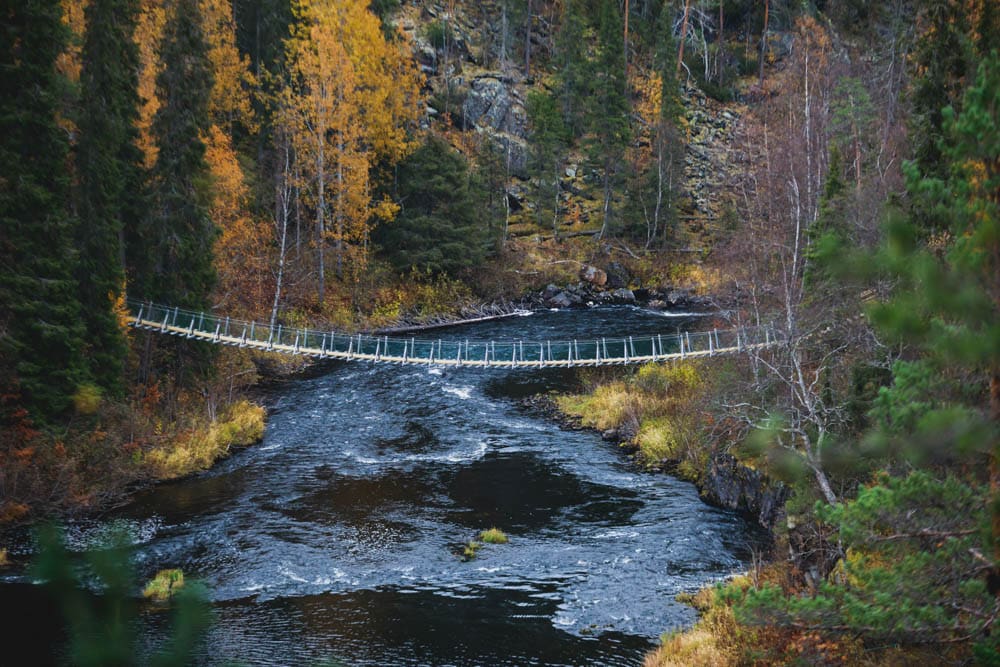
There are lots of hiking trails that take you through the park in the summer months. These range from a few hundred feet to viewpoints over the lakes, to the extensive Karhunkierros Trail that covers abut 50 miles of trails through the park.
In the summer months whitewater rafting down the rapids of the rivers that run through the national park is also available. The most accessible and best organized tours are close to Basecamp Oulanka and take you past the pretty Myllykoski Mill. In the winter months, it is possible to walk to the mill and look over the rapids as they steam in the frozen air.
In the winter months, the lakes are all frozen, and this is the perfect time to go cross-country skiing or snowshoeing through the forests. Jyrävänjärvi Lake is one of the lakes that has ski trails across the lake and into the surrounding forests.
Oulanka National Park is also a great place for watching the northern lights in the winter months. The skies around the park are dark, so on clear nights, the sky will light up and dance.
Suggested by Suzanne of Meandering Wild
Pyrenees National Park, France
The Pyrénées National Park forms part of the Pyrenees mountain range that spans the borders of France and Spain while engulfing the entire country of Andorra. The park is located in the French departments of Hautes-Pyrenees and Pyrenees-Atlantiques.
The landscapes, scenery and outdoor activities in this area make Pyrenees National Park one of the most beautiful parks to visit in France. There is something to see and do in the Pyrénées National Park in any season.
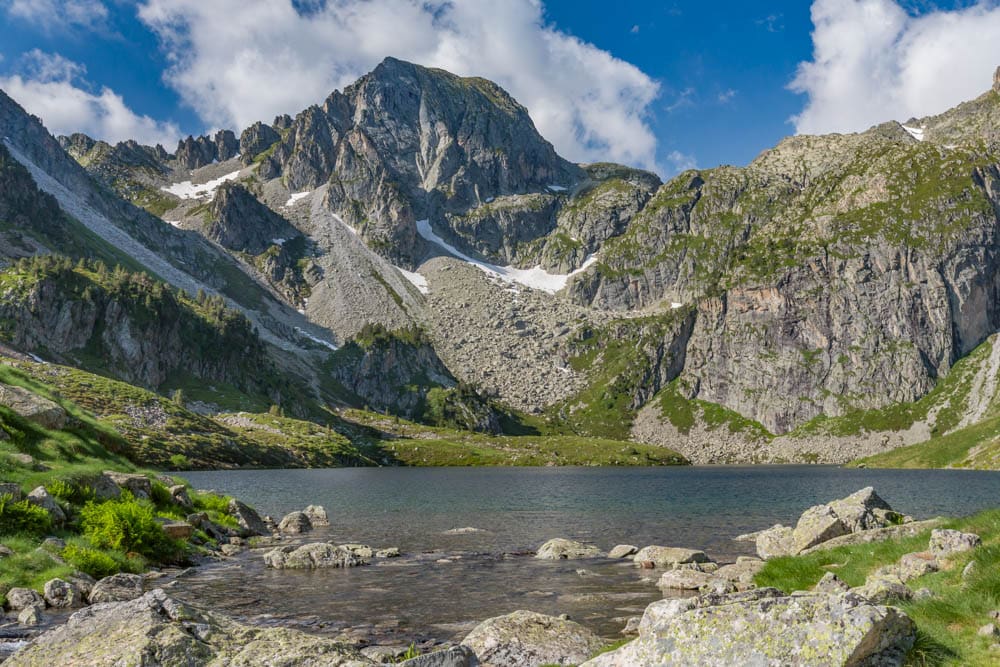
Some of the best things to do include hiking, biking, snow sports, climbing, wildlife viewing, and spa wellness experiences. Two main attractions drawing visitors to the park, located close to the quaint town of Cauterets, are the Pont d’Espagne and the Cirque de Gavarnie.
The Pont d’Espagne (meaning Bridge of Spain) is the medieval bridge that once served as the trading border between France and Spain. Several waterfalls meet at this point, and the scenery is stunning.
The Cirque de Gavarnie is an enormous horseshoe-shaped wall rock formation that resembles an amphitheatre. It was formed by a glacier, and waterfalls spill over into the area below. The Gavarnie Falls is the highest waterfall in mainland France.
Cauterets is also known for its ski resort during the winter months and year-round thermal baths. There is a high concentration of thermal baths and spa wellness experiences in the park. Their curing waters and relaxing properties have attracted visitors since the Roman era!
Suggested by Laura of Gallivanting Laura
Wicklow Mountains National Park, Ireland
Located only one hour south of Dublin, Wicklow Mountains National Park is one of those parks you don’t know you need to visit! It is a heaven for nature lovers, hiking enthusiasts and seekers of peaceful times.
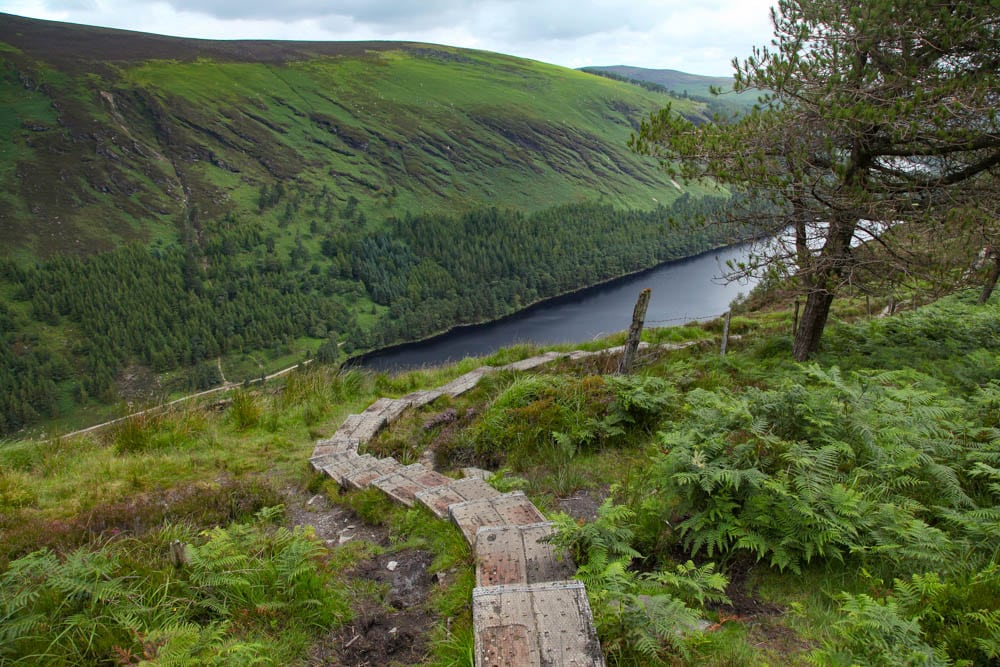
Highlights in the Wicklow Mountains National Park include hiking Lough Ouler, a heart-shaped lake that is jaw-dropping, and driving the Sally Gap, which offers sweeping views over Lough Tay, also called Guinness Lake.
The Spinc Hike is also a local’s favorite, as it takes you past the Poulanass Waterfall, and overlooks the Glendalough Valley with the famous and popular Upper Lake.
If you are not a big fan of hikes, fear not, Wicklow Mountains National Park still has lots to offer. If you enjoy spending time with fluffy animals, walking an alpaca is a top activity in Wicklow. Book a slot in advance though, as this is one of the locals’ favorites!
Wicklow also carries a lot of history. From Powerscourt House and Gardens to the Russborough House & Parklands, you will love learning about times we can now only imagine!
The best time to visit the park is around May-June, which is when the Irish weather is at its peak with sun and comfortable temperatures between 55°F and 68°F. Outside this period, you will most likely experience rain, wind, and possible storms and that’s just not practical when spending most of your time outdoors.
Suggested by Mary of Right Back by Mary
Durmitor National Park, Montenegro
A visit to Durmitor National Park will take you on an incredible journey into the mountains of northwestern Montenegro. The dizzying depths of the Tara Canyon gorge and the pristine mountain lakes make this park is a “must see” for nature lovers.
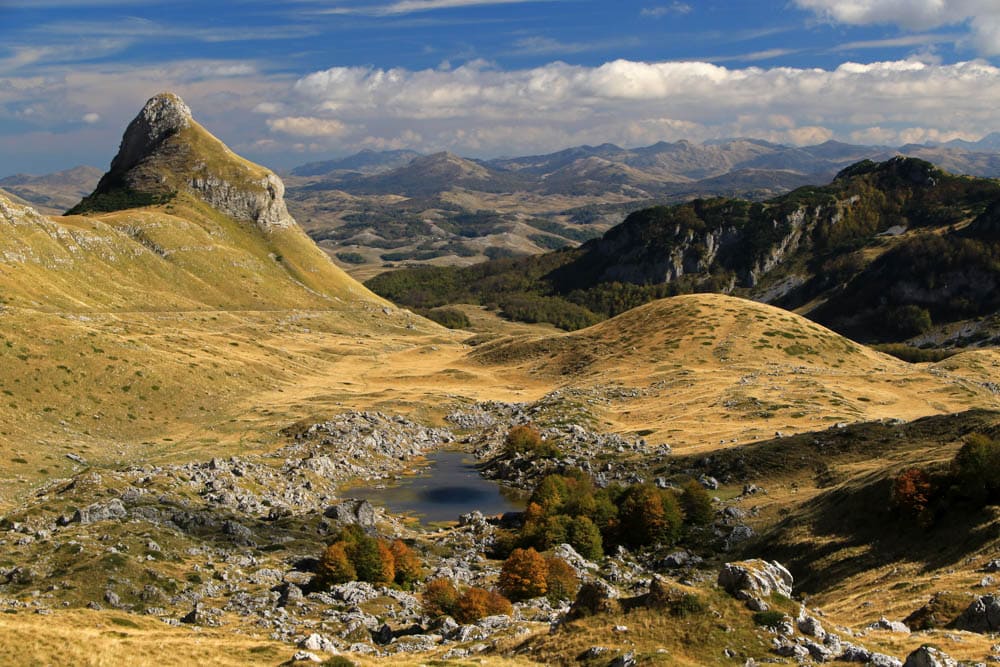
Durmitor National Park offers something for everyone! Exploring this park is definitely one of the best things to do in Montenegro.
Within the 39,000-acre park, you’ll find 23 mountain peaks for hiking, 17 glacier lakes for breathtaking scenery, and dense forests that are home to a multitude of flora and fauna.
During your stay, you can hike Montenegro’s highest peak, go rafting on the Tara River, take a stroll around Black Lake, go bird watching, or visit Dobrilovina, a Serbian Orthodox monastery near the edge of the national park.
Thrill-seekers can even zipline across Tara Canyon or go paragliding near Savin Kuk! The whole family can have fun at the Adrenaline Park or on a leisurely hike around Black Lake.
The best time to enjoy hiking and rafting in the park is during the warmer months, from mid-April through mid-October. During the winter months, you can enjoy skiing and snowboarding on the majestic mountain slopes.
The town of Žabljak is the perfect place to stay while you explore the park.
Suggested by Annie of Into the Bold
Peak District National Park, England
The Peak District is Britain’s largest national park, covering 550 square miles, and arguably has the most diverse landscapes. It is split into the White Peaks and the Dark Peaks, and both sections are worth exploring.
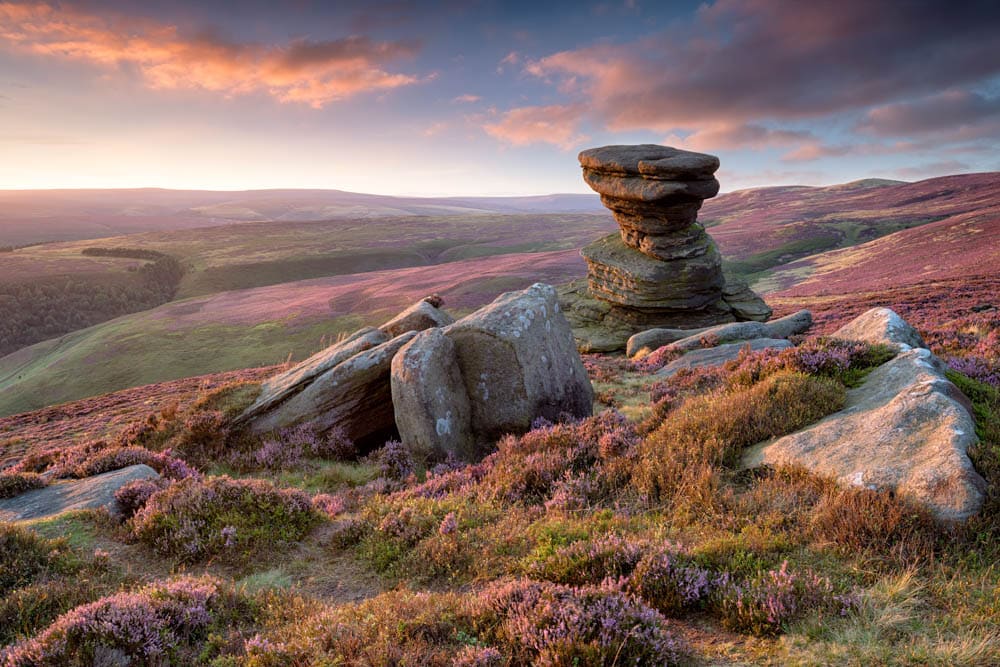
There’s something for everyone in the Peaks, whether you are into hiking, climbing, history, or exploring quaint English towns. Plus, the proximity to cities such as Manchester and Sheffield makes it very appealing.
Some of the best things to do in the Peak District are hiking the tallest peak Kinder Scout for fantastic views over the valley, climbing at Stanage Edge, or driving through the epic landscape of Winnats Pass.
You can also step back in time at the grand Chatsworth House, eat Bakewell tarts in Bakewell or enjoy a classic English pub meal in Castleton village. You can also enjoy family-friendly activities such as exploring Blue John’s Cavern and Peveril Castle. The national park offers so much to explore!
Undeniably, the best time to visit is early September, when the heather is in bloom, transforming the park to a beautiful purple hue. The weather is mild at this time and perfect for hiking and exploring. It is also when the school holidays are over, and the crowds have begun to disappear.
Suggested by Rachel of Average Lives
Swiss National Park, Switzerland
Located at a height of 4,593-10,400 feet at the southeastern corner of Switzerland, Swiss National Park is renowned for its picturesque landscapes and natural beauty.
If you enjoy spending time in the lap of nature, with charming rivers, lively waterfalls, high mountains, and wildlife, this European national park is a must-visit place for you.
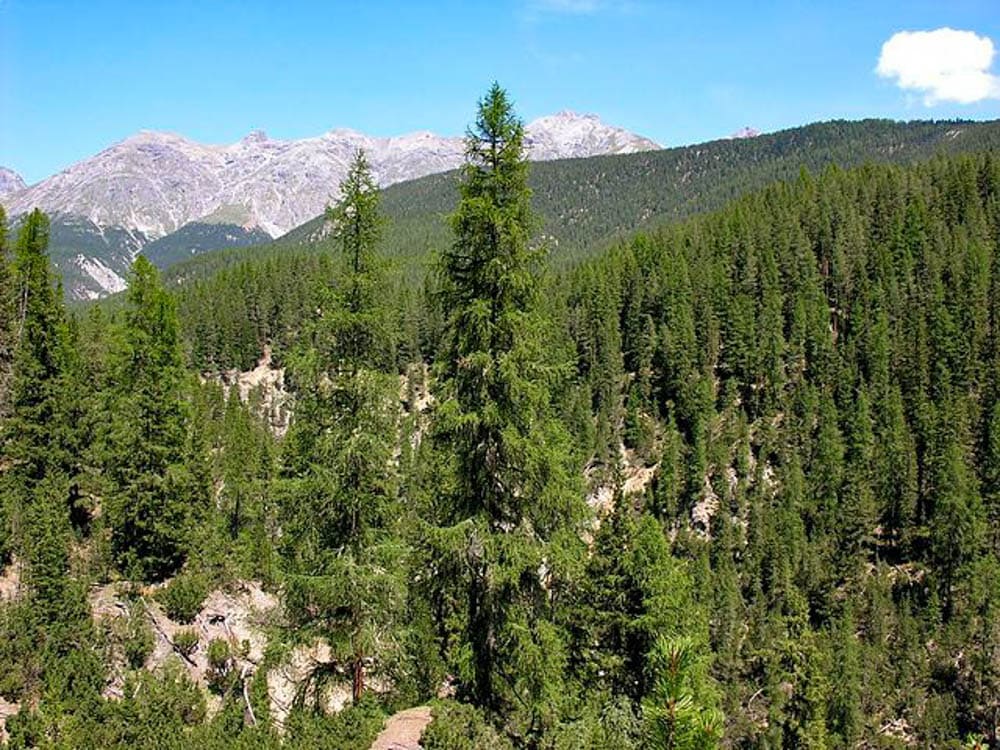
The best time to visit Swiss National Park is early June, when the trails can be accessed easily and you can see various wildflowers like gentians, edelweiss, bellflowers, and many more. October is also a great month for its mild weather.
The most popular activities in Swiss National Park are hiking and wildlife watching. The park features 50 miles of hiking trails. The Val Trupchun hike is the best and easiest hike in this park. In the fall, it offers magnificent views of the colors of the larch trees. Keep your eyes open to spot chamois, ibexes, bald eagles, rabbits, lizards, and a variety of birds.
Lais de Macun and Buffalora are more challenging trails, but offer stunning views of alpine lakes and snow-capped mountains. You can take guided hikes through the park as well. The visitor center, with exhibits (some geared toward kids), and the Schmelzra Museum are other places to discover in the park.
Swiss National Park is a wildlife viewing paradise and you can see a variety of Swiss animals here, some of which you cannot find in any other place. You can choose a wildlife tour to spot marmots, snow vole, red deer, ibex, and many other animals.
Suggested by Trijit of Dog Travel Buff
Cairngorms National Park, Scotland
If you’re looking for an excellent national park to visit in Europe, look no further than Cairngorms National Park in northern Scotland! It’s the perfect way to witness what Scotland is so well-known for: the mountainous terrain that makes you feel like you’re in a fairy tale.
Plus, it’s one of the best places to visit in Scotland.
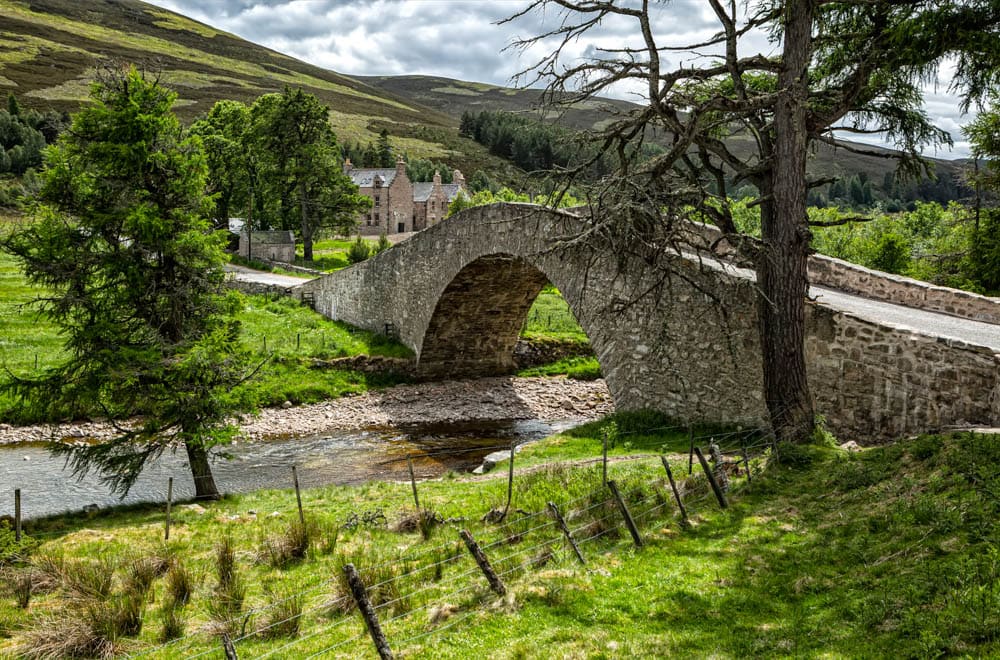
When visiting Cairngorms National Park, one attraction that you absolutely can’t miss is Balmoral Castle. This is the Queen’s summer home, so it’s open to visitors fall through spring. Guests can explore the grounds following a map!
If you’re interested in visiting a smaller castle that normally doesn’t have as many visitors, you can also visit Braemar Castle. This is a traditional historic castle where you’ll be able to learn a lot as you step back in time. If you visit both Braemar and Balmoral, you can save money on entry fees!
To experience more of the outdoors, there are many hikes from which to choose. The most popular hike is Meall a’ Bhuachaille, a trail that is about five miles long. The views along the way are absolutely impeccable. For an easier hike, you can also check out Loch Morlich.
Last but not least, one of the best things to do in the Cairngorms is to visit one of the many local distilleries! Royal Lochnagar Distillery, Glenlivet Distillery, and Tamnavulin Distillery are all great options for visitors to the area.
While most people will opt to visit in the summer, truly the best time to visit is in the spring. Everything in the park is starting to come alive again, and the colors are breathtaking. Plus, there are smaller crowds.
Suggested by Krystianna of Volumes and Voyages
Peneda Geres National Park, Portugal
Peneda Gerês National Park in Portugal has it all: lakes (natural and man-made), mountains, trails, waterfalls, lookouts, Roman ruins, and imposing castles. It’s also home to some traditional villages with very unique settings and cultural heritage.
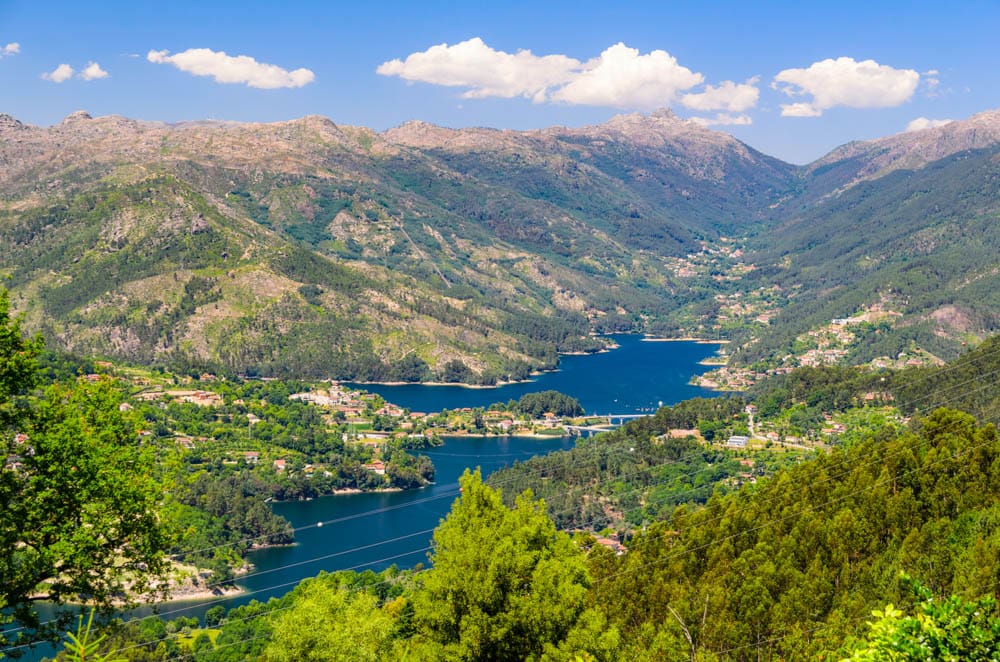
The cute villages inside the park include Castro de Laboreiro, Lindoso, Fafião, Soajo, Pintões de Júnias, Peneda and a few others. They are some of the ideal places to stay in the Peneda Gerês National Park.
Portugal’s only national park, Peneda Gerês National Park has stunning green landscapes. Plus, there are plenty of activities to do like hiking, horse riding, canyoning, and water sports.
Here you will find some of the best hikes in Portugal. There are several trails, from short ones that you can hike in a few hours to longer ones where you need to hike for several days.
The most famous attractions in the National Park are Pedra Bela Lookout (one of the most beautiful lookouts in Portugal), Albergaria Forest (beautiful ancient forest), Tahiti waterfalls (possibly the most beautiful of the many falls in Geres), and Castro Laboreiro Castle.
The best time to visit Peneda-Gerês National Park is during spring and summer. These seasons are when you can explore the park to its full potential, swim in the lakes, do water sports, and hike the trails. It sometimes snows in winter, but it usually melts in a few days.
Suggested by Claudia and Jorge of Travel Drafts
De Hoge Veluwe National Park, Netherlands
National Park De Hoge Veluwe is a beautiful park in the mideast of the Netherlands. The Veluwe is considered by many to be the most beautiful nature area in the country. You can find forests, heathlands, grass plains, and drifting sands in this national park.
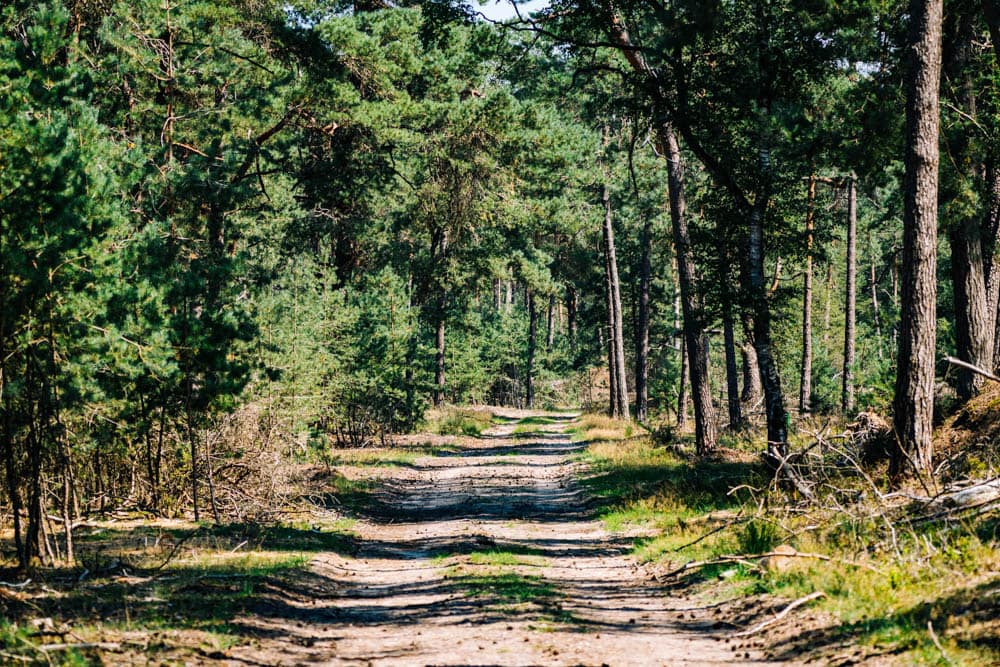
Unique at this park are the white bikes. They are free to use. With these bikes, you can bike around on the many biking lanes, a perfect way to discover the park, and the best thing to do.
Second, you have to visit the Kröller-Müller museum. It has the second largest Van Gogh collection in the world. Throughout the whole park you will bump into art sculptures.
Another fun thing to do in De Hoge Veluwe to do is to go on a guided safari to spot the big four: red deer, mouflon, deer, and wild boar. Or visit the Museonder, a nature museum inside the park.
The best months to visit depend on the reason for your visit. If the goal is to see the heathland bloom purple, then August and September are the best months. If you want to hear and see the red deer in rut then you’ll have to visit in September or October. However the park is beautiful all year long.
Suggested by Cosette of KarsTravels
Tatra National Park, Poland
With epic mountain hikes, world-class skiing, and some of the most beautiful lakes in the world, the Tatra National Park is easily one of the best national parks to visit in Europe!
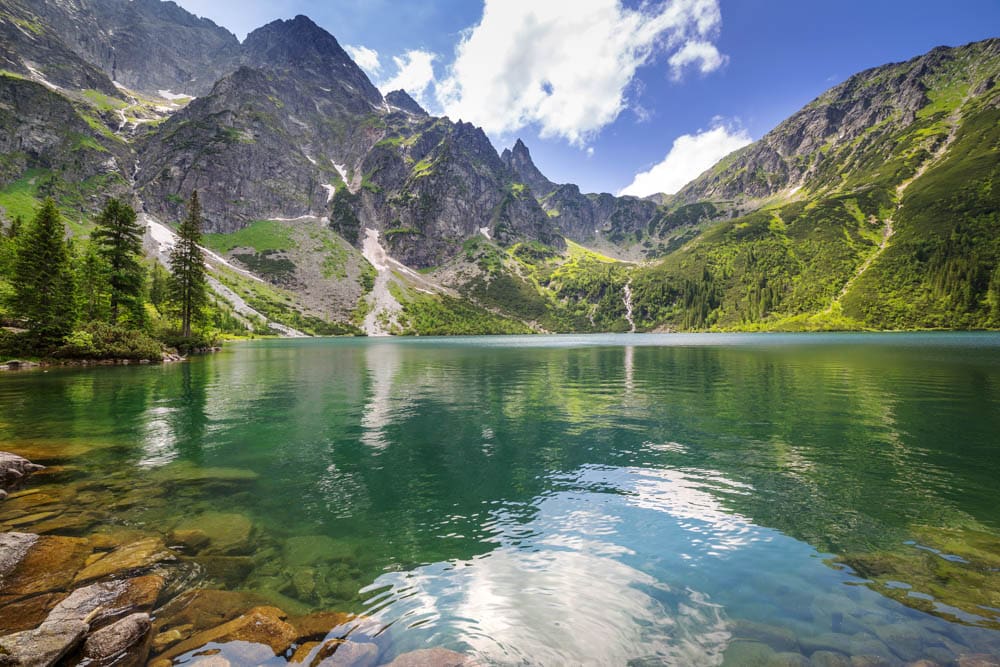
Located on the border of Poland and Slovakia, this national park is known as one of the best day trips from Krakow, Poland, and many locals own cabins out here to escape from the city on weekends. If you’re planning to visit the Tatra Mountains, you should definitely head to the small Polish town of Zakopane. From here, you can get a cable car up to the top of the mountains for breathtaking views of the national park!
Hiking is the most popular activity here in summer, with the Morskie Oko and Štrbské Pleso hikes being two of the most scenic. In winter, the Tatra Mountains turn into a skiing paradise, with the slopes here being some of the cheapest in Europe!
If you’d prefer to spend your time relaxing, be sure to head to the many thermal pools scattered across the national park. Some of the best pools are Termy Bukovina and Thermal Swimming Pool Vrbov, but you can’t really go wrong no matter where you visit!
Since there are things to do in both winter and summer, there isn’t really a bad time to visit Tatra National Park. However, the best time to hike is September, when the summer temperatures have dropped but the snow hasn’t yet fallen.
Suggested by Ella of Many More Maps
Thingvellir National Park, Iceland
Thingvellir National Park is located only a one-hour drive from Reykjavik, the capital of Iceland. It is one of the most popular places to visit from Reykjavik as a day trip, since it is one of the four main stops on the famous Golden Circle drive.
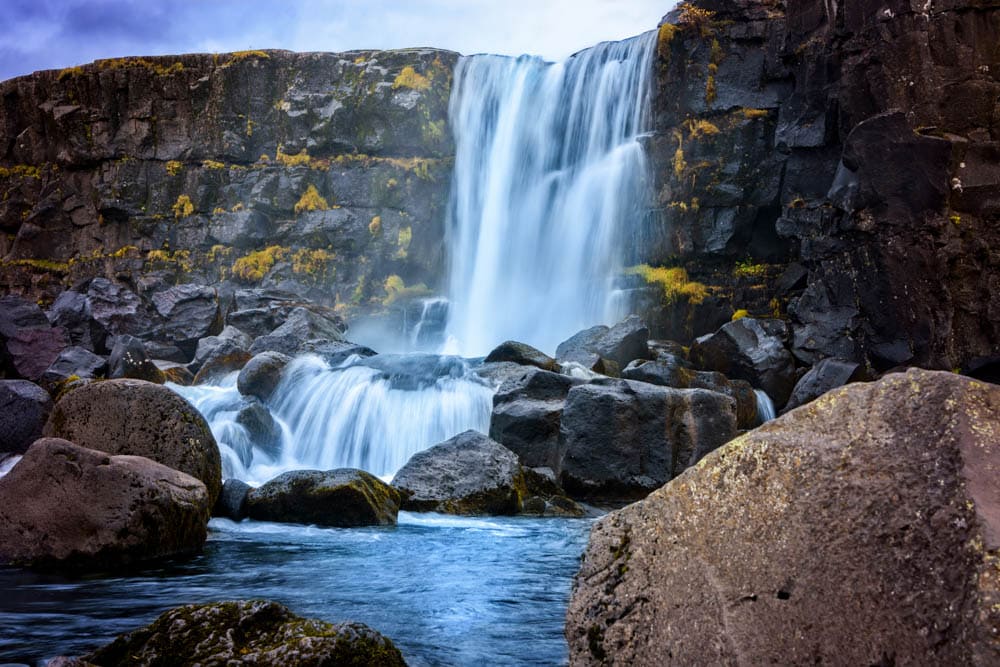
The park was listed as a UNESCO World Heritage Site in 2004 due to its very important place in Iceland’s history and geology. In fact, the national park covers a large part of the Mid-Atlantic Ridge, where the Eurasian and North American tectonic plates are drifting apart.
Thingvellir is also the historical birthplace of democracy in Iceland, with the annual parliament meetings (called Althing) gathering all the island’s chieftains from the year 930 AD.
One of the most popular activities in the park is snorkeling or diving between the tectonic plates at the Silfra fissure. If you don’t want to dip your toes in the glacial waters, you can still walk along the North American Ridge at the Almannagjá gorge and appreciate the beauty of the valley from accessible viewpoints. Make sure to also pay a visit to the beautiful Oxararfoss waterfall.
The great thing about Iceland is that whenever you visit the country the landscape will be different. Thingvellir is open all year long and any season is great. It is up to you if you prefer seeing the park under cover of snow or during the brighter days of summer.
Suggested by Jenny of Tales from the Lens
Picos de Europa National Park, Spain
Considered one of the most beautiful destinations in the Asturias, the Picos de Europa National Park in northern Spain is popular with both nature lovers and outdoor sports enthusiasts. The park features many tall peaks, but the northernmost part of the park is just a few miles from the Cantabrian Sea.

One of the most attractive sights in the park are the Covadonga Lakes, two small glacial lakes set at an altitude of more than 3.600 feet. You will also find the Covadonga Basilica in the region: it was built to commemorate the start of the Reconquista. A steep road leads from the basilica to the lakes.
Other places of note in the park include the dramatic Naranjo de Bulnes Peak, which is generally hidden by cloud or fog, La Hermida Canyon, created by the Deva River, and the village of Bulnes, accessed by cable car.
The Cares Trail, one of the most famous hiking trails in Spain, runs along the Cares Gorge in the park. It is a very challenging hike. The park has many other hiking trails, some of which are family friendly. The Pueblos de Sajambre loop goes past some of the villages in the area.
Other than hiking, some of the popular activities in the park include biking, rock or mountain climbing, wildlife viewing and birdwatching, caving, kayaking, and via ferrata.
The park is crowded in the summer, but June and September generally offer great weather without the crowds. In the spring, you can still see snow at higher elevations but you should be able to walk trails at lower elevations. Fall brings stunning leaf colors.
Suggested by us
Maddalena Archipelago National Park, Italy
If you’re looking for must-see national parks in Europe, you have to visit the Parco Nazionale dell’Arcipelago della Maddalena in Sardinia, Italy. With its pristine white sand beaches, pink granite rocks and crystal clear turquoise water, it’s one of the most stunning beach destinations in the world.
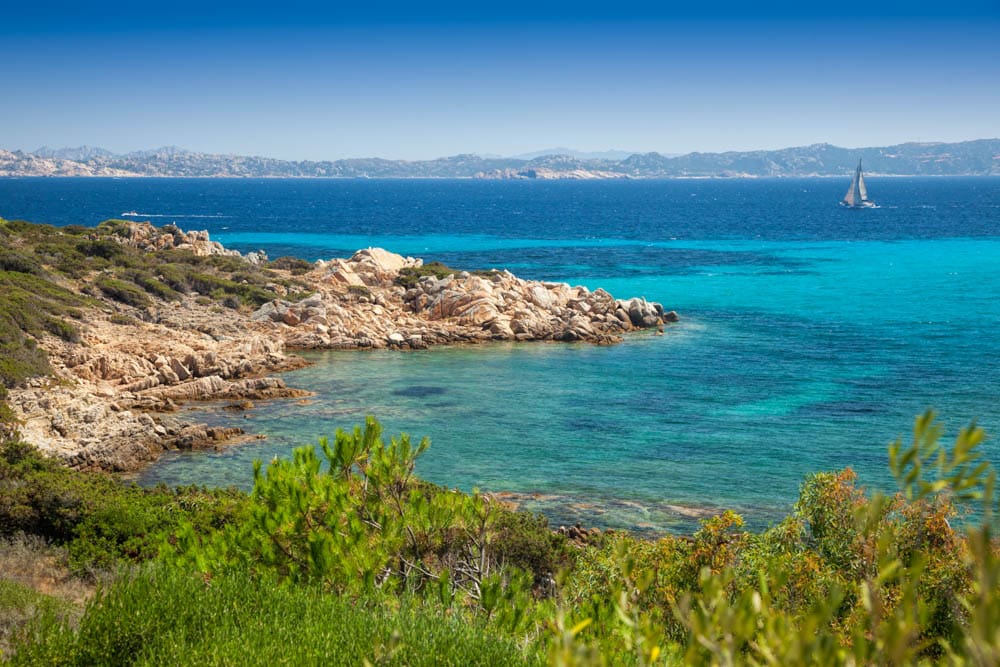
The archipelago sits in the northeast of Sardinia, in the Strait of Bonifacio close to Corsica, and is composed of seven main islands; Maddalena, Caprera, Santo Stefano, Spargi, Budelli, Santa Maria, and Razzoli.
In summer, these islands are visited every day by thousands of visitors who want to swim in that picture perfect pool-like water, and relax on the soft white sand of its beaches. However relaxing at the beach isn’t the only thing you can do in the National Park of Maddalena.
You can also go on very panoramic hikes, like the one leading to the famous beach of Cala Coticcio, on the island of Caprera. You could also go on an island hopping tour or you could visit the museum and house of Italian hero Giuseppe Garibaldi. E-bike or scooter tours around the bigger islands of Caprera and Maddalena are also very popular.
However you decide to explore this national park, the natural beauty of these islands and beaches won’t disappoint you.
Suggested by Greta of Greta’s Travels
Snaefellsjokull National Park, Iceland
Snæfellsjökull National Park in Iceland is a place of legend. The main feature of the park is the glacier-capped volcano Snæfellsjökull, which was the entry point to the earth’s core in Jules Verne’s novel, A Journey to the Center of the Earth. That might be fiction, but there’s still a lot to discover in Snæfellsjökull National Park.
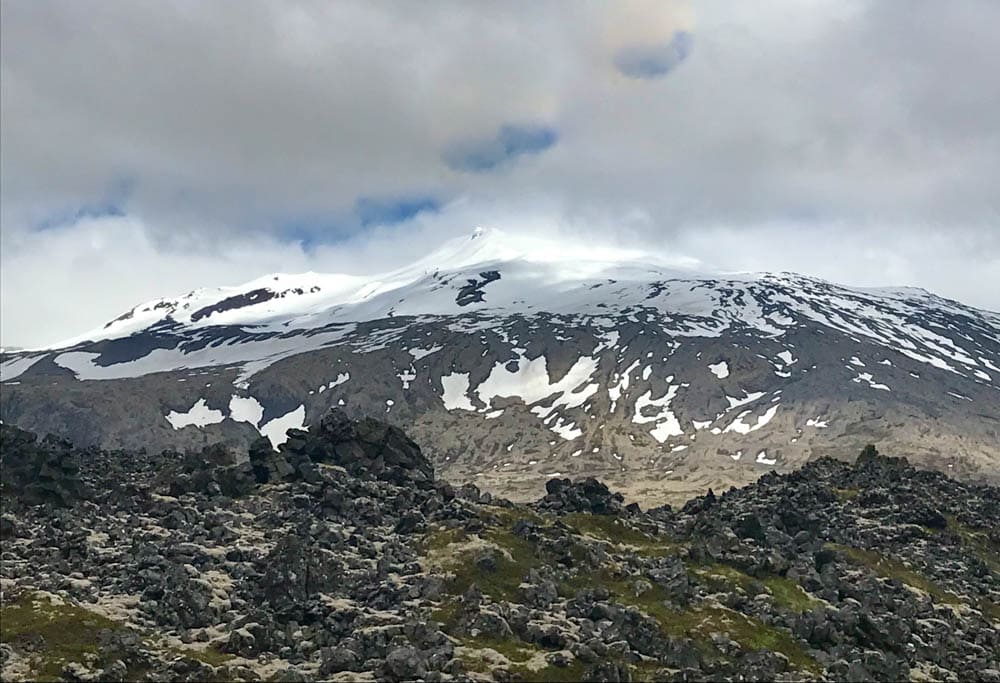
You can explore the area around Snæfellsjökull itself, though it is not advisable to enter lava caves without an expert guide. You can also climb Saxhóll Crater, which is a distinct but small crater to the west of Snæfellsjökull. It has steps up to the summit, so it’s pretty easy to climb (and you don’t need any experts for this one).
Djúpalónssandur has a wild black sand beach, where a ship wreck occurred in 1948: you can still see rusty remains of the vessel.
And just outside the boundaries of the park are some picturesque hamlets including Arnastapi and Budir, where cute cottages and churches feel small against the dramatic volcanic landscape.
Snæfellsjökull National Park is located at the western end of the Snaefellsnes Peninsula, which is known as ‘Iceland in miniature,’ due to it having a little of everything Iceland is famous for: volcanoes, glaciers, mountains, black sand beaches, and charming villages. It is not far from Reykjavik and it’s possible to explore Snæfellsjökull National Park and indeed the entire Snaefellsnes Peninsula in a day.
You can visit Iceland year round, but navigating the smaller roads can be tricky in the icy weather of winter, so go in summer, when the days are long and the landscape is a vibrant green.
Suggested by Martha of May Cause Wanderlust
Bavarian Forest National Park, Germany
The Bavarian Forest National Park is located in southeast Germany, sharing the border with the Czech Republic. Becoming the first national park in Germany in 1970, it has since been expanded to an incredible 93.6 square miles, and together with the neighboring Czech Bohemian Forest, is the largest forested area in Central Europe. This unbelievable park is a must-see when visiting Germany!
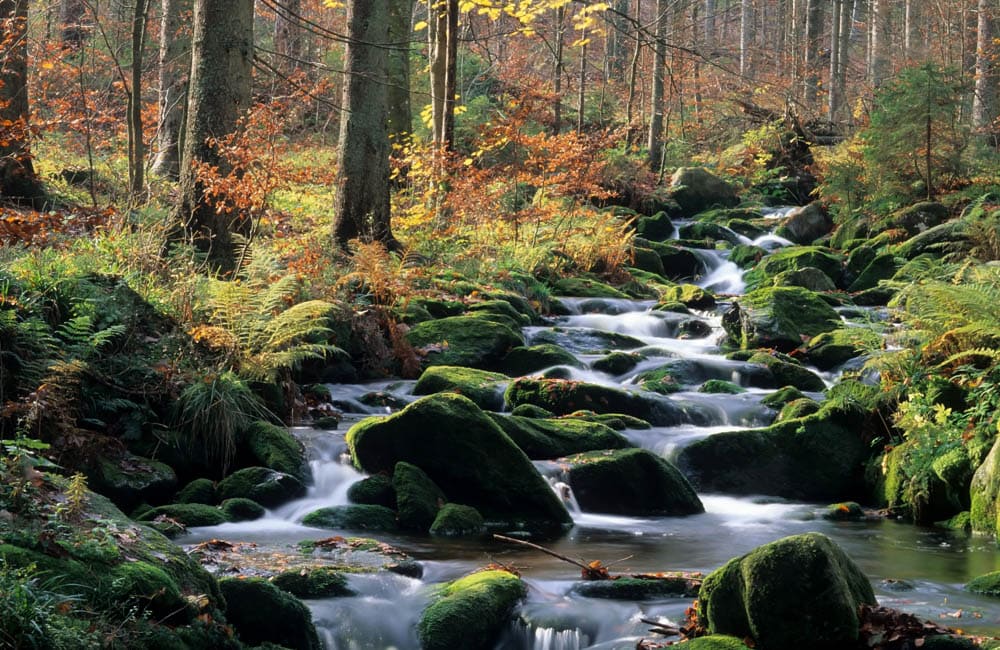
Not only is the park gorgeous to see, but there are so many things to do there year-round! Hiking, of course, is the best way to see the park. With approximately 217 miles of well-marked trails, you could spend an entire day exploring the forest.
Doing some wildlife-spotting while hiking or snowshoeing through the Bavarian Forest is another popular activity. The park is home to many rare mammals like the Eurasian lynx, or bird species like the capercaillie, making it a photographers’ dream.
The Bavarian Forest National Park also offers guided tours, some aimed specifically at children. For example, take a walk through the forest while a knowledgeable guide teaches you about native wolves: how they hunt, communicate, and form packs.
If you are looking for activities other than hiking, the Bavarian Forest National Park also offers incredible children’s programs, specialist lectures, festivals, concerts, exhibitions, and workshops. Check in at the visitor center to find out more.
Suggested by Marianne of Pasta Pretzels and Passports
Krka National Park, Croatia
Croatia’s beautiful national parks are some of the country’s most popular destinations.
Known for its waterfalls, Krka National Park is one of the most scenic places to visit in Croatia. The park features a series of waterfalls on a rushing river and several historic points of interest.
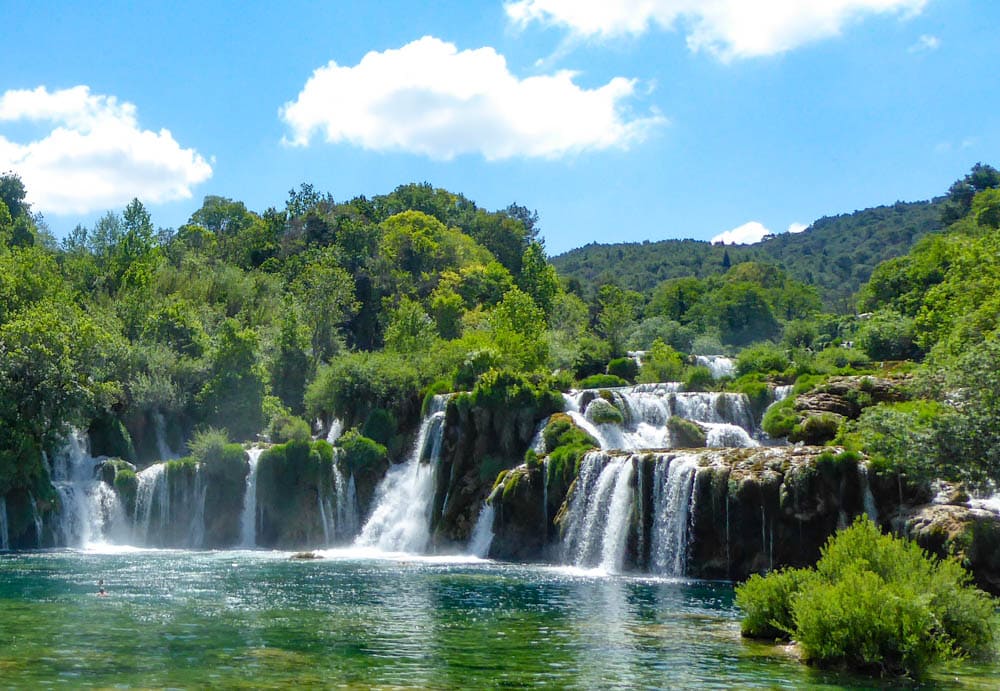
Hiking the loop around Skradinski Buk is a must do activity. The Skradinski Buk loop can be walked in 90 minutes. Walking on wooden walkways over the rushing water and admiring the various waterfalls is a truly memorable experience! There’s also a historic water mill, small souvenir shop, boat rides, and food vendors that are open during the summer.
Driving 45 minutes north leads to the Roski Slap viewpoint within a small village. The Roski Slap circle loop trail includes wooden bridges across the river’s “necklaces” and a couple of side trails to climb up to overlooks. The town of Skradin, southwest of the park, is also worth a stop if you have time.
Krka National Park can easily be visited on a day trip from Split, Zadar, or Sibenik. The park is open year-round. In the winter, some activities like boat rides and concession stands may be closed. However, there are fewer tourists in the off-season so you can enjoy more solitude on the trails.
Suggested by Michelle of Intentional Travelers
Read more: The Best Day Trips from Split
Lake Skadar National Park, Montenegro
Lake Skadar is one of the most beautiful natural attractions in Montenegro. If you choose to leave the Bay of Kotor behind to explore some of the interior of the country, you will be rewarded with beautiful experiences, of which Lake Skadar is undoubtedly one of the best.
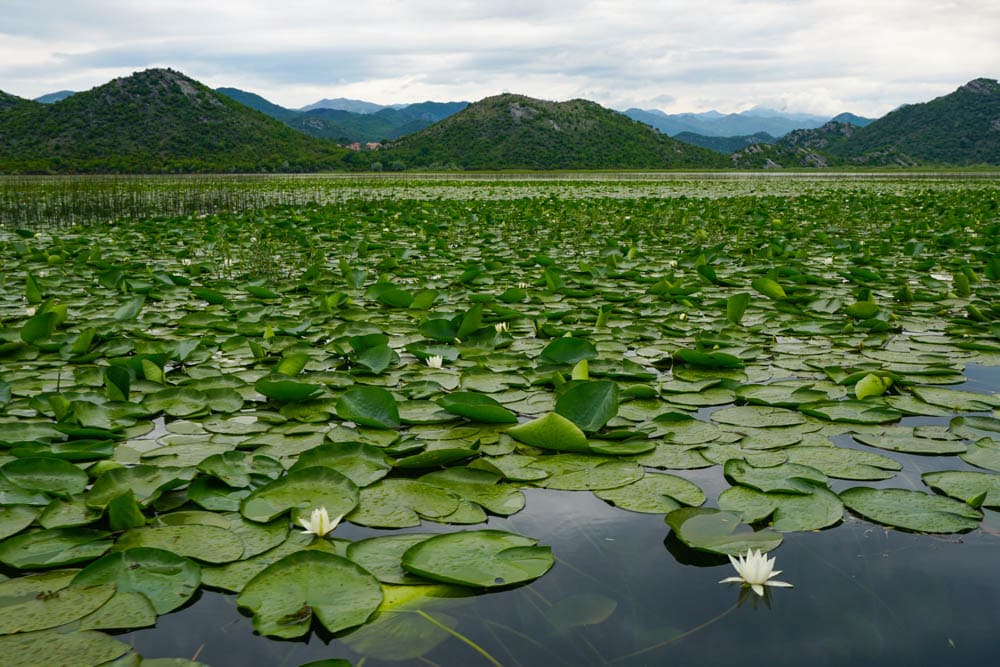
Shaped like a dolphin, Lake Skadar straddles Montenegro and Albania, and in Montenegro, an area of a little over 150 square miles of the lake is protected as a national park. Lake Skadar is known for being one of the richest bird habitats in all of Europe. On a single boat ride of about one hour, we saw numerous bird species, including many Dalmatian pelicans, with their large wing spans.
The landscape is tranquil and beautiful. You may see ruins of old monasteries on the banks of the lake or on islands, and mountains in the distance. Thousands of lily pads float on the water, and when they are in bloom, they make for a stunning sight.
While parts of the lake are open, parts of it include tunnels of water surrounded by vegetation for a safari-like experience. While you can hike on the banks of Lake Skadar or in the surrounding mountains, a boat ride is the best way to experience the lake and its bird life. Boat tours depart from Virpazar or Rijeka Crnojevica.
Lake Skadar National Park is a year-round destination. Spring and summer are lush green, and you will see lots of wildflowers. Fall brings leaf colors. Winters are relatively mild, with daytime highs in the 50s Fahrenheit. Bring a warm jacket for the boat ride in the winter.
You can combine Lovcen National Park and Lake Skadar National Park on a day trip if your time in Montenegro is short, or visit eash park on its own.
Suggested by us
North York Moors National Park, England
The North York Moors National Park is a beautiful national park in the north of England. Characterized by large expanses of heather moorland, the national park extends to the coastline along the sea. Full of charming villages, beautiful scenery, and excellent opportunities for hiking, this is a must-visit part of the county of Yorkshire.
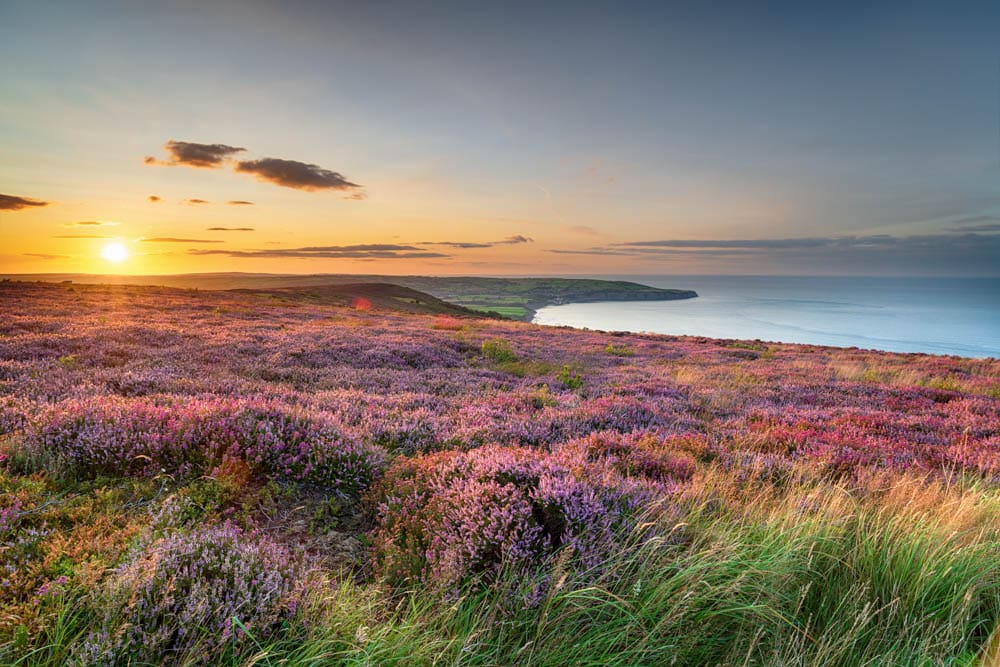
One of the best things to do in North York Moors is to explore the pretty villages – Goathland, Robin Hood’s Bay, Thornton-le-Dale, and Helmsley are picturesque places to spend part of the day. You can also discover the area’s history firsthand at sites such as Rievaulx Abbey – a stunning set of abbey ruins, dating back to the 12th century – or the remains of mines, kilns, and industrial heritage around Rosedale.
And you can’t miss exploring the beautiful Yorkshire countryside on a hike. The Hole of Horcum is a 5-mile loop with spectacular views, or for a linear route, follow the Cleveland Way National Trail from Whitby south to Robin Hood’s Bay (approximately 7 miles one-way).
The best time to visit North York Moors National Park is towards the end of August, when the heather blooms and covers the landscape in a blanket of purple. However, the moorland looks just as enchanting when coated in snow, and there are plenty of areas to see pretty flowers bloom in the spring.
Suggested by Maja of Away with Maja
Killarney National Park, Ireland
Killarney National Park is a stunning destination that definitely deserves a place on your European national park bucket list. Ireland’s first national park, Killarney is known for picturesque lakes along with rugged mountains and sprawling woodland forests.
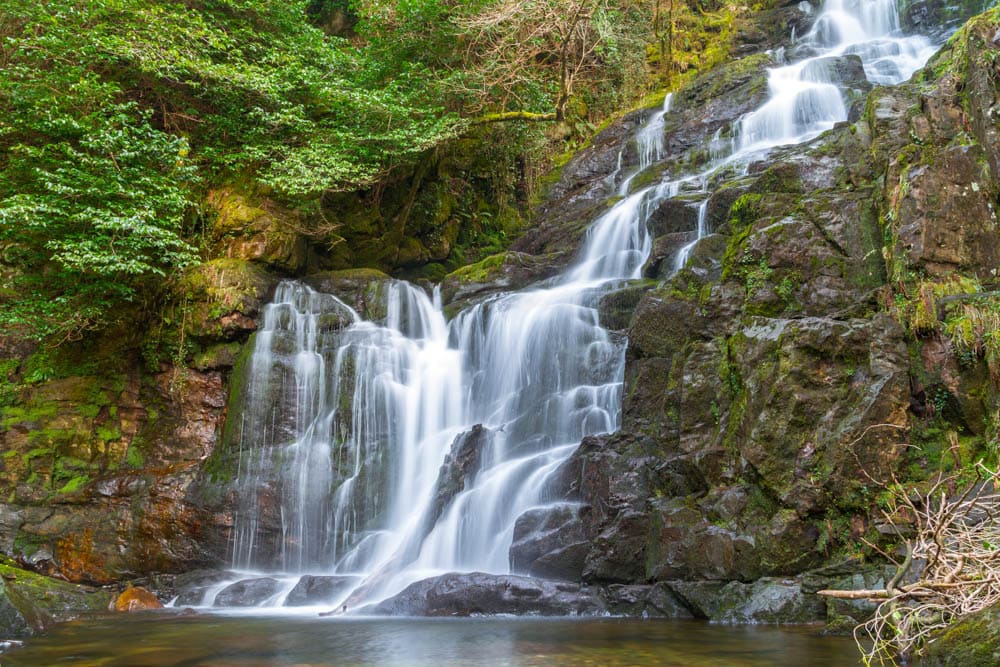
Most visits to Killarney begin at Muckross Estate. This splendid mansion was part of the original park when it was created in 1932. Now visitors can tour the historic house and gardens, along with the crumbling remains of Muckross Abbey down the road.
Ross Castle is another must-see destination at Killarney National Park. Perched on the shores of Lough Lane, this 15th century castle serves as a jumping off point for boat tours through the Killarney Lakes. From there, you can travel by boat to Lord Brandon’s Cottage and walk the spectacular Gap of Dunloe.
As no cars are allowed in the park, plan to explore by boat or bike (or on foot). You can also tour Killarney in a traditional jaunting car, which is a trap and pony with open seating in the back. It provides a great vantage point from which to watch for the park’s herd of native red deer.
Summer is a lovely time to visit Killarney National Park, due to its warm temperatures. However, you should be prepared for crowds and high prices. Consider visiting during spring or fall when the temperatures are cooler and there are fewer people.
Suggested by Katy of A Rambling Unicorn
Doñana National Park, Spain
Located on the coast of Andalucia, and less than 25 miles from the beautiful city of Seville you’ll find Parque Nacional de Doñana, or in English, Doñana National Park.
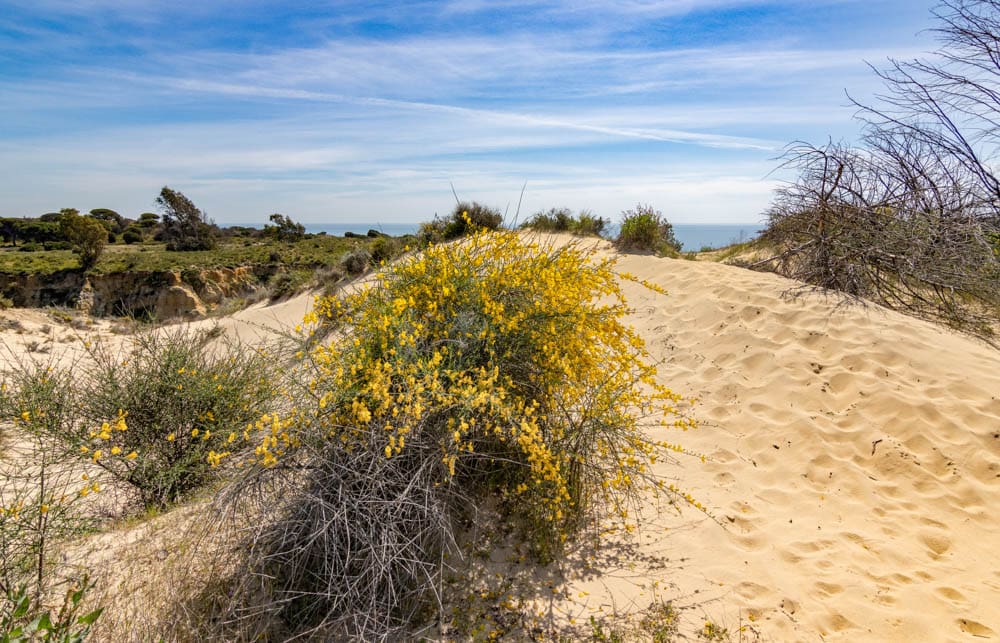
The park feels like a million miles from civilization, and although you can access it by public transport, it’s better if you have a car to fully explore not only the park itself but the region surrounding it. If you’re thinking of doing a road trip in Southern Spain, then allow at least a day here, two days if you want to fully explore the walking trails.
For nature lovers, Doñana National Park is one of the best day trips from Seville if you are spending a few days in the Andalusian city and want to explore your surroundings.
Doñana National Park is a UNESCO World Heritage site. It’s gained this status because the ecosystem, which is mainly wetlands, attracts tens of thousands of migratory birds making the journey between Europe and Africa. The birds can be seen all year round.
Although a large portion of the park is kept for the preservation of the delicate bio reserve, you’ll be able to watch the birds in designated areas as well as explore the freshly scented pine forests and shifting coastal dunes, which both have clearly marked trails to explore.
If you’re interested in old buildings, then head towards the El Rocío Hermitage. This building dates back to the 13th century and if you’re there when water surrounds the plateau, it makes a great photo, reflected back in the waters with the backdrop of blue skies.
Suggested by Becky of Andalucia Explored
Snowdonia National Park, Wales
Snowdonia National Park, Wales’ first national park, is the most beautiful part of the country. It has amazing lakes, mountains and plenty of waterfalls. Aber Falls can be accessed via a relatively easy walk and provides excellent views. This scenic hike among bluebells to see the spectacular waterfall will stay in your memories forever.
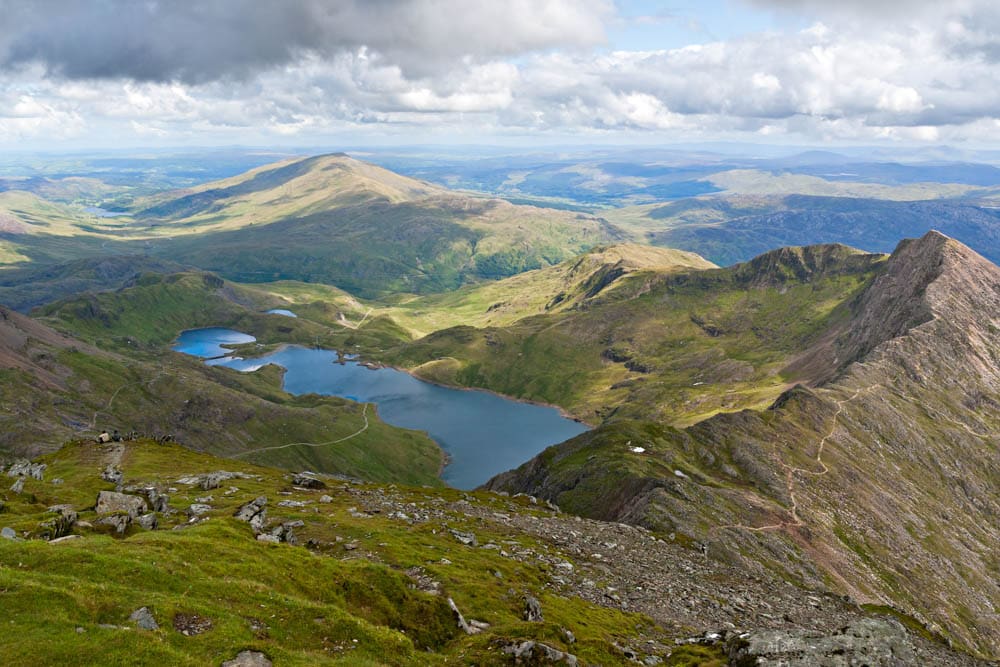
However, Snowdonia National Park is mostly famous for being home to the highest mountain in Wales. There are 7 different paths to the summit of Snowdon. Most of the visitors start to climb at Llanberis Paths, as it is one of the easiest routes. If you want to see a heart shaped lake en route, choose Miners Track!
Dolgoch Falls is another beautiful set of waterfalls in the park, and the lowest falls can be reached with a short walk. It is a bit of a climb to the other two falls, with steep stone steps, but the second falls especially are worth the climb. Also in the park, ride the Snowdon Mountain Railway, visit the National Slate Museum.
When visiting the area, be sure to see some of the castles here. The medieval fortifications built by Edward I, such as Harlech Castle or Conwy Castle, are well worth visiting. In the town of Conwy, you can admire amazing views of Snowdonia National Park from one of the castle’s towers.
Suggested by Paulina of UK Everyday Contact
Kornati National Park, Croatia
The Kornati National Park in Croatia, often referred to simply as the Kornati Islands, is an extremely interesting group of islands in Croatia. This natural jewel is located in the Dalmatian region and covers an area of about 124 square miles along the coast.

Thanks to its breathtaking beauty, the numerous islands, and also because of its intact underwater world, this national park is a real highlight in Europe. The islands are strictly protected in the National Park Kornati, a guarantee that this natural jewel will be preserved for a long time. The protected area includes not only the 89 islands, but also the marine area and the ecosystem under water.
The largest island of Kornati National Park is Kornat, which means crown. Here you can enjoy a variety of water activities and also go hiking up hill for views over the water and the archipelago. Also visit the fortress of Tureta, an ancient hilltop ruin that offers magnificent views.
The cliffs of Kornati, called “crowns,” are a must-see, because they are unique to the islands. The dramatic cliffs at Telascica Nature Park nearby are worth exploring. If you enjoy water activities like swimming or snorkeling, there are many spots at Kornati to discover.
The best way to explore the Kornati National Park is by boat. Tours are offered by many resorts on the mainland.
Suggested by Martina of Places of Juma
Port-Cros National Park, France
Port-Cros National Park is located on the French island of Port-Cros in the Mediterranean Sea, a 30- to 60-minute ferry transfer from the continent. Pristine islands close to the continent are rare in the Mediterranean Sea. Port-Cros has been protected as a national park since 1963, and it is also a marine park to please both hikers and snorkelers.
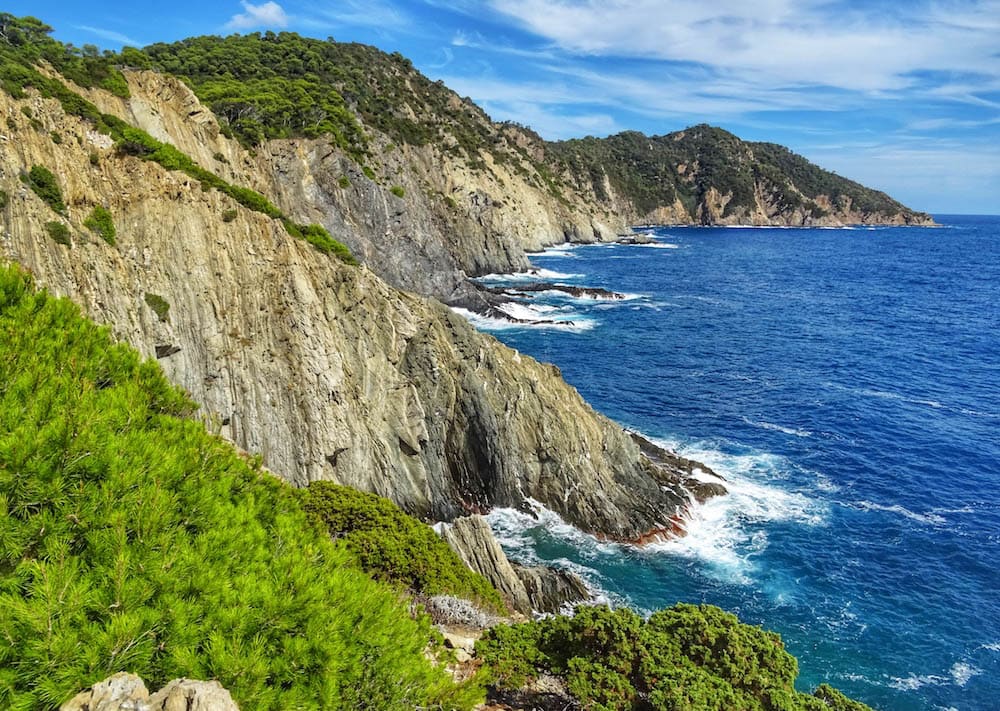
No cars or bikes are allowed on the island. It can only be explored on foot or by boat, so you should bring good shoes to visit the national park, even if you only plan to go to the beach. Also, you’ll only find food and shops at the main port, so plan accordingly.
Hiking trails will take you all around the island to wild and untouched spots that are rare in this region. You will need to stay overnight to explore them all. If accommodation on the island is fully booked, then you can stay on the continent near the Hyeres or Le Lavandou. From there, you can board a shuttle boat for a day trip to Port-Cros.
The Plage de la Palud (La Palud Beach) is not to be missed. A lovely 45-minute walk from the main port takes you to this small beach in front of the beautiful Rascas Rocks in the bay. But the best part is underwater. A snorkeling trail with underwater signs helps you learn more about the biodiversity in the oldest marine park of Europe.
It’s better to visit Port-Cros outside the summer and school holidays (July and August). The weather is lovely from May to October. Early September may be the best time to visit this national park as the water will still be warm.
Suggested by Eloise of My Favourite Escapes
Broads National Park, England
With over 125 miles of man-made waterways, an abundance of wildlife, and an interesting history, The Broads National Park is the ideal place for a peaceful and relaxing family holiday.
With all the things to do in the Norfolk Broads, there is something for everyone. You can enjoy water sports, boating, walks, cycling, birdwatching, and more.
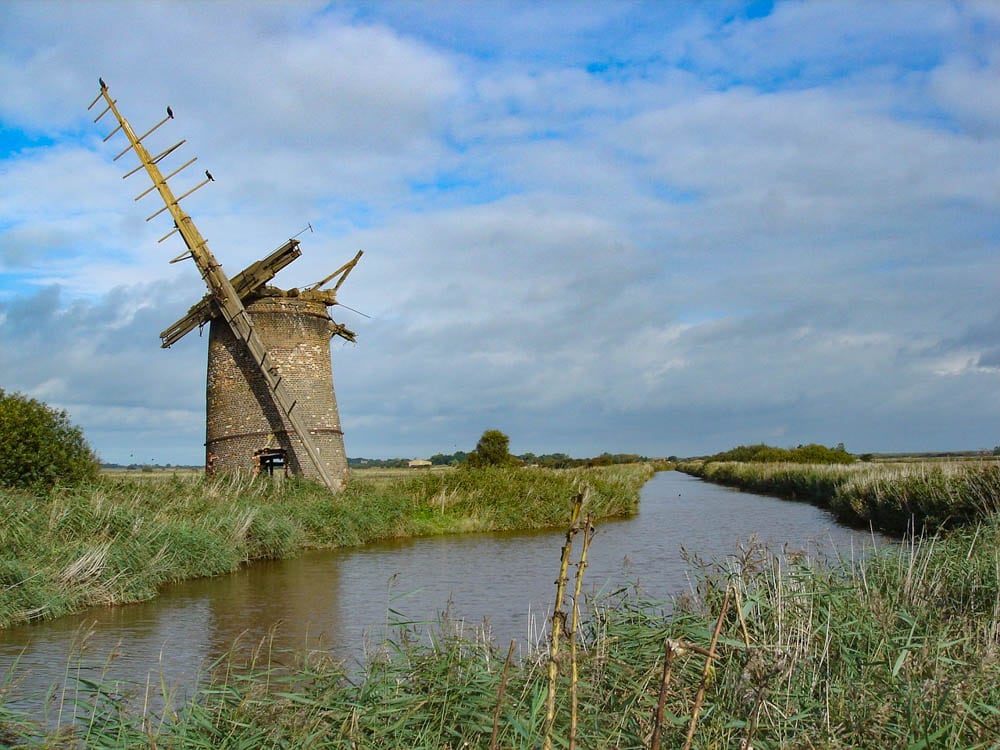
If you want to try boating, it’s the perfect spot because the water is calm. You can rent a boat for the day or explore the area in a kayak or a stand-up paddle board. There are also boat tours for those that want someone else to be the captain.
For those that prefer to stay on dry land, there are plenty of walking and cycling trails in the Broads. Most trails are relatively easy as the landscape is mostly flat but there are some long distance options, like the Wherryman’s Way, if you want to challenge yourself.
As you explore the Norfolk Broads, keep an eye out for wildlife. The area is home to many mammals, birds, and insects that cannot be seen anywhere else. It’s easy to spot many types of damselflies, but you might need to look a little harder for the marsh harriers, water voles, kingfishers, and more. Be sure to visit one of the nature reserves, like How Hill, Ranworth Broad, or RSPB Stumpshaw Fen.
To get a bird’s eye view of the area, climb the tower of St. Helen’s Church in Ranworth, affectionately known as the Cathedral of the Broads. After all that hard work, stop in at the Maltsters for a pint and some traditional pub food.
To truly experience the Broads, visit during the summer, when the weather is warm, and allow yourself at least a few days.
Suggested by Anisa of Norfolk Local Guide
Karkonosze National Park, Poland
Karkonosze National Park runs along the Polish-Czech border in the southeast of Poland. Together with the Czech part of the park, the area is recognized as a biosphere reserve under UNESCO’s Man and the Biosphere Program for its exceptional beauty and diversity. The Karkonosze Park is one of the best places to visit in Poland for outdoor and nature lovers!
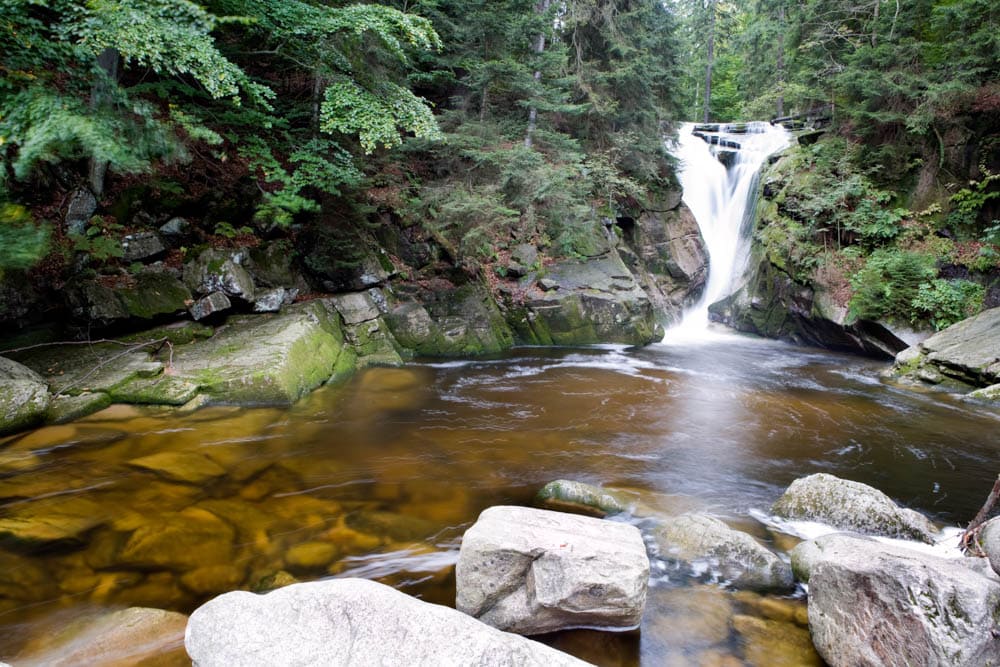
An ideal place to base yourself for exploring Karkonosze is Karpacz, with excellent accommodation choices and plenty of traditional Polish taverns called ‘karczma’ serving hearty food and entertaining their guests with live folk music.
Climb Sniezka Mountain, the highest peak in the Sudety Mountains and the second highest peak in Poland, at over 5,250 feet. There are various trails to get to the top ranging in difficulty, and all of them take you through stunning mountainous scenery.
Karkonosze also has some beautiful waterfalls to explore. If you love chasing waterfalls, visit Kamienczyk, the park’s longest and most impressive waterfall measuring over 88 feet and consisting of three picturesque cascades.
If you’re short on time but still want to enjoy the stunning views without having to hike to the top, take a chairlift to the top of either Mount Szrenica or Mount Kopa.
Finally, don’t forget to visit the icon of Karpacz – Wang Church, dating back to the 12th century. It is a Norwegian Stave church, bought by King Frederick William IV of Prussia and re-erected in the mountains here.
The best time to visit Karkonosze is May to June and September to October when the weather is mild, and crowds ease off.
Suggested by Mal of Raw Mal Roams
Yorkshire Dales National Park, England
The striking natural beauty of the Yorkshire Dales in England makes it a national park that should be at the top of your bucket list. And TripAdvisor users agree! In 2021, the website named the Yorkshire Dales the best national park in Europe.
So, what is all the fuss about?
The Yorkshire Dales is a destination for outdoor lovers. The best things to do in the Yorkshire Dales involve getting outdoors and admiring the breathtaking, unspoiled beauty of the region.
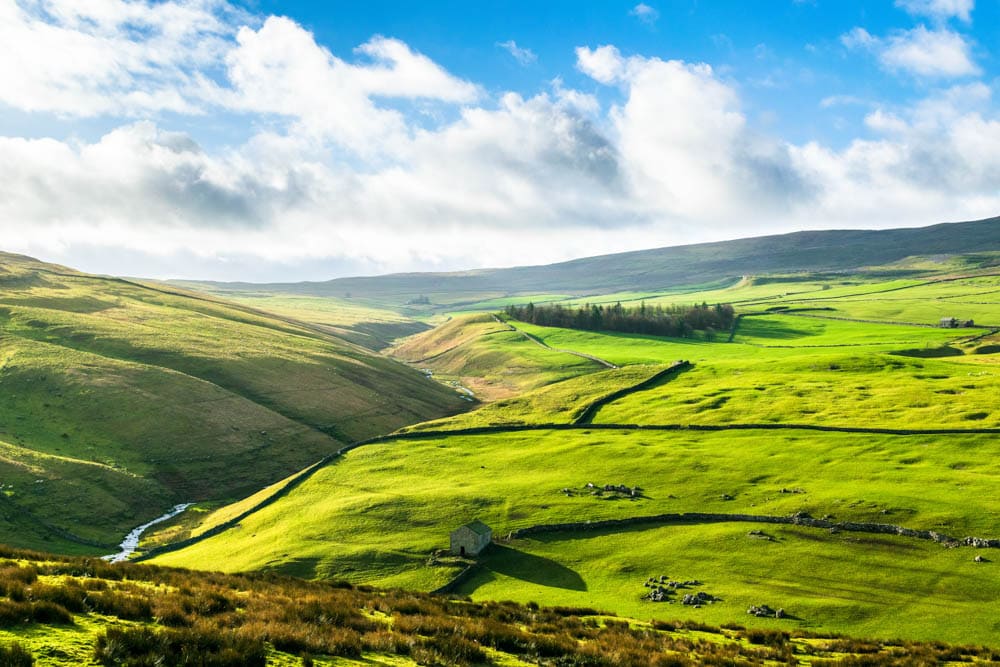
Hiking is one of the most popular activities. There are many popular hiking routes for all ability levels. One of the most famous is at Malham, where you can take in the imposing natural landscapes on a circular route.
Chasing waterfalls is another great activity. The national park is littered with striking waterfalls. One of the best places to see them is Ingleton Waterfalls Trail, which is a circular walking route with spectacular views of six waterfalls.
For a different view of the Dales, you can head underground into many of the unique cave formations including White Scar Cave and Ingleborough Cave.
If you want to avoid the biggest crowds while still getting the best chance of nice weather, the shoulder seasons of May/June or September are the best times to visit.
Suggested by Hannah of Get Lost Travel Blog
Calanques National Park, France
Calanques National Park is located in southern France, between Marseille and Cassis, and is a gorgeous area right along the Mediterranean. The calanques, which are natural, narrow inlets with steep walls, line the Mediterranean sea and are filled with gorgeous blue-green water.
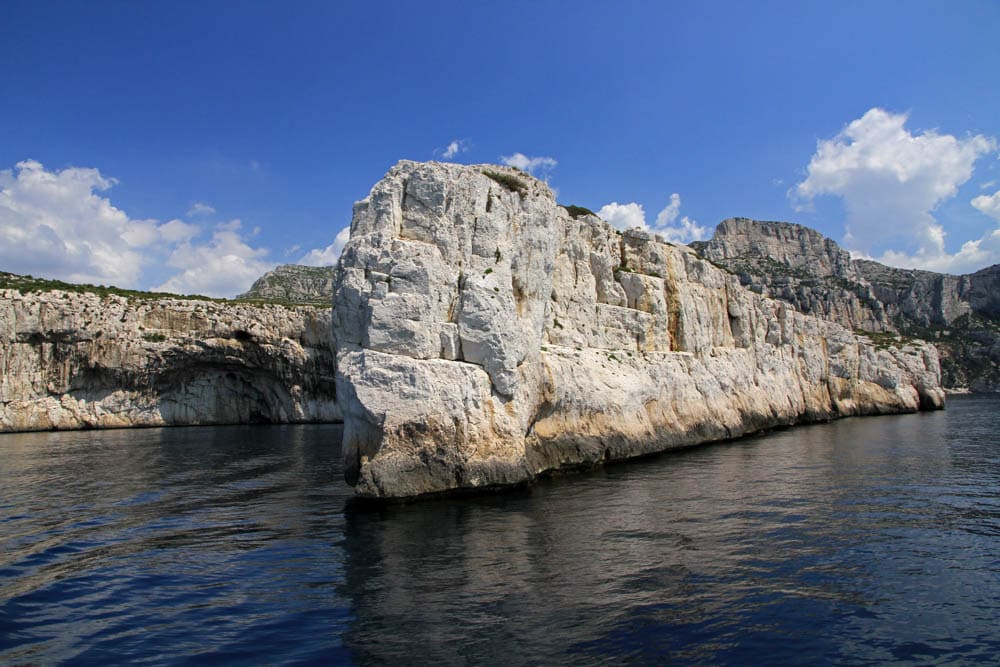
The most popular hike starts from Port Miou in Cassis. Here you can take a short 15-20 minute walk to Calanque de Port Pin, which is a popular local swimming destination in the summer.
Continue past Calanque de Port Pin to Calanque d’En Vau, which is the most famous and, ostensibly, most spectacular of the calanques. It’s a longer hike (plan for 2+ hours total), and has a steep descent, but the view is so worth it.
Alternatively, you can visit calanques closer to Marseille, such as Calanque de Sormiou. This is the biggest calanque in the national park, and has a sandy beach. Or, check out Calanque de Sugiton, which has a secluded, craggy coastline to explore.
Spring, summer, and fall are the best times to visit the calanques. The milder temperatures of spring and fall make for the best hiking weather, but the water is warmest in summer. If you plan to hike during the summer, start early in the day, and bring lots of water and a head covering: the sun can get intense!
Suggested by Stephanie of The Unknown Enthusiast
Ordesa Y Monte Perido National Park, Spain
Ordesa y Monte Perdido National Park, a UNESCO designated Biosphere Reserve located in northern Spain, is a beautiful national park covering more than 60 square miles of mountains, forests, waterfalls, and glaciers. But the highlight of Ordesa y Monte Perdido is the unique karst landscape of canyons, dramatic valleys, and caves formed in limestone over thousands of years.
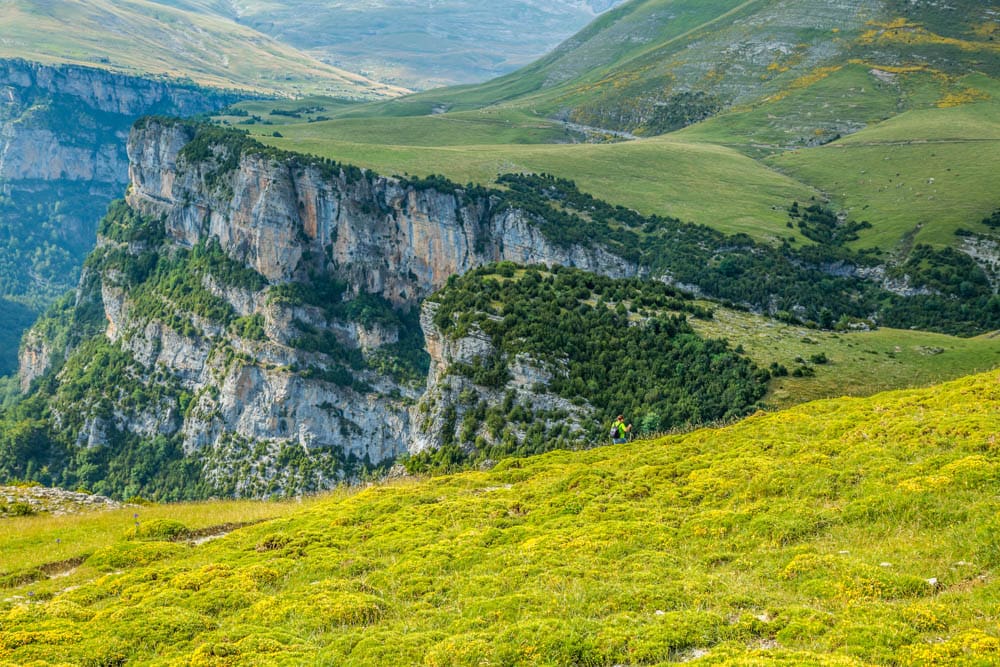
Ordesa y Monte Perdido is heaven if you are a mountain lover. The gorgeous Pyrenees, a chain of mountains running through France and Spain, surround you as you enter the park. In the middle of the park stands Monte Perdido, the third highest peak in the Pyrenees.
This stunning mountain range is a popular hiking spot, with altitudes ranging from 2,300 to 9,800 feet. You can pick from 19 different hiking trails covering the park’s four valleys.
You can choose to hike to Lake Marboré near Mount Perido’s peak. If you prefer to stay in lower altitudes, the Ordesa Valley (the park’s namesake) is teeming with wildlife. You may spot deer, bear, or chamois. If you are looking for activities aside from hiking, Ordesa y Monte Perdido offers river sports like whitewater rafting and kayaking or horseback tours between the valleys.
The mountains of Ordesa y Monte Perdido are breathtaking when covered in snow in winter. For an active winter adventure, you can hike 8,500 feet up to the stunning Mount Perdido glacier.
If exploring outdoors is not your thing, you can relax in one of the several quaint Spanish retirement towns outside the park, where you can sip on a glass of Spanish wine and enjoy the spectacular views from a warm cottage.
Suggested by Marco of Nomadic Fire
Lovcen National Park, Montenegro
Mount Lovćen is the black mountain after which Montenegro is named. Lovcen National Park is a must-visit, not only for its natural beauty, but also for its significance in Montenegro’s history and culture. The park is one of the best day trips from Kotor you can do if you want to experience some of the country’s inland beauty.
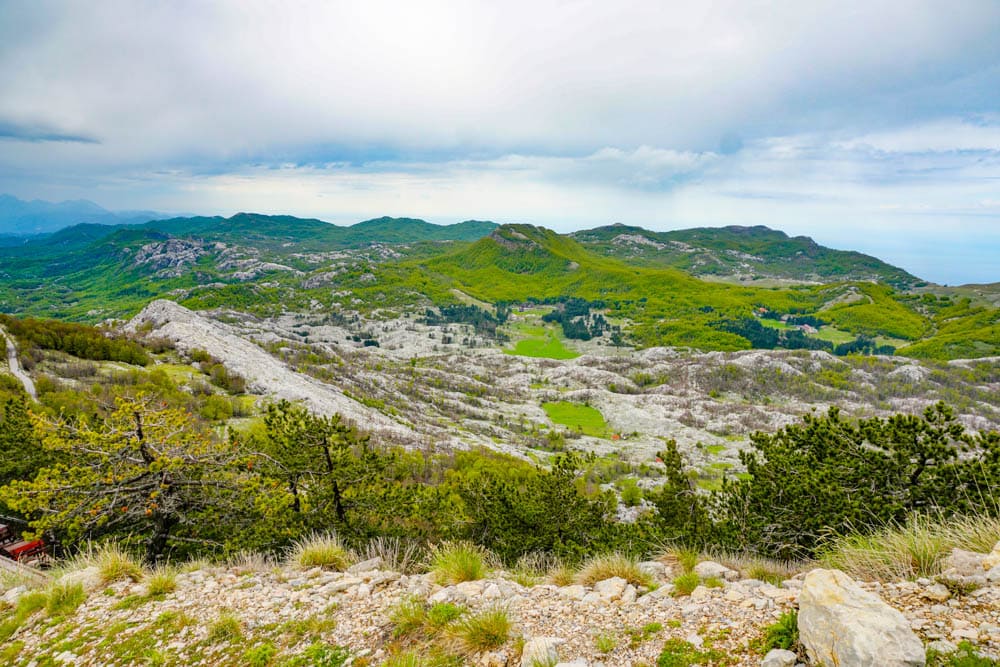
Mount Lovcen has two peaks, and the lower of the two is the final resting place of Petar II Petrović-Njegoš, a poet, philosopher, and prince who is considered one of the most influential individuals in Montenegro’s history. The monument on the mountain top offers stunning views.
Also within the national park is the village of Njeguši, where Njegos was born. At the village, you can taste the cheese and ham that are considered specialties. The village is small, but makes for an enjoyable stroll.
Lovcen National Park offers hiking and biking trails. Hiking trails vary in length and difficulty. Fall is an especially scenic time to hike in the park, when changing leaf colors make for a beautiful landscape.
Enjoy the diverse flora and fauna, and if you like birdwatching, bring your binoculars, because you will likely see (and hear!) numerous bird species. For thrill seekers, there is a zip line. And if you travel from Kotor to the park, take the Kotor Serpentine for a thrilling drive with exceptional views over the Bay of Kotor and beyond.
You can visit Lovcen National Park year-round, although May through October is best for hiking and exploring. Spring brings lots of wildflowers, and summer temperatures are pleasant. In winter, you will likely find a snow-covered landscape, although roads may still be open.
Suggested by us
*****
Looking for more travel inspiration for Europe? Check out some of our other articles!
- 10 Days in Europe: 25 Exciting Itineraries!
- Where to Go in Winter in Europe
- The Best Christmas Markets in Europe
- The Most Beautiful Places to Visit in Spain
- The Best 10-Day Italy Itineraries for Your Next Trip!
- The Most Beautiful Towns in Italy for Your Bucket List
- The Best One-Week Europe Trip Itineraries
- Magnificent European Palaces You Must Visit
- Best Places to Visit in Slovenia
- The Most Exciting Cities to Visit in Europe
Did you find this article informative? Pin it for later reference!
